Deep South
Deep South
We find ourselves far, far south.
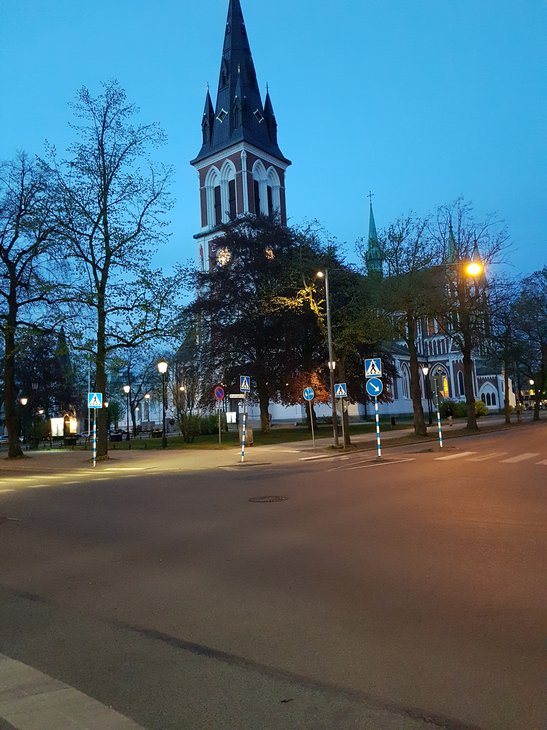
In Jönköping.
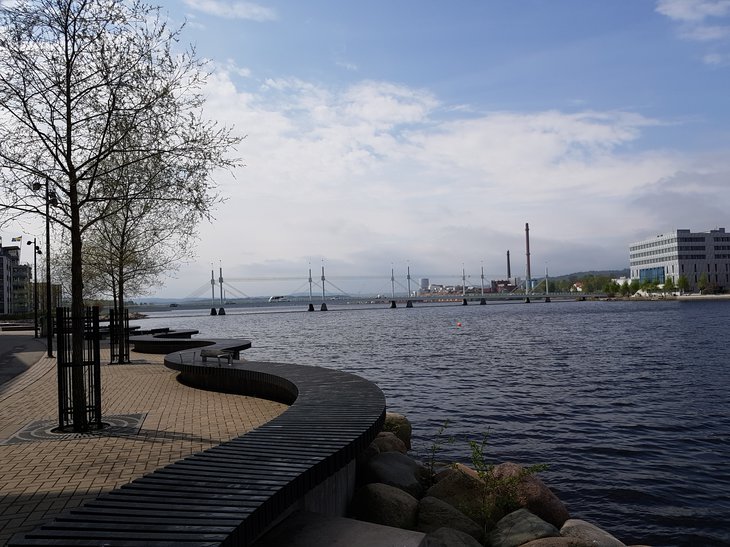
Just to pick up a car.
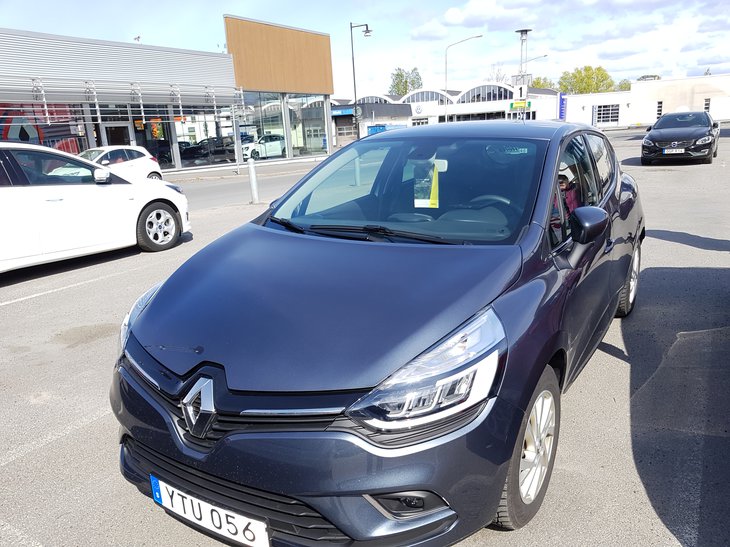
Which immediately gets bitten by a moose.
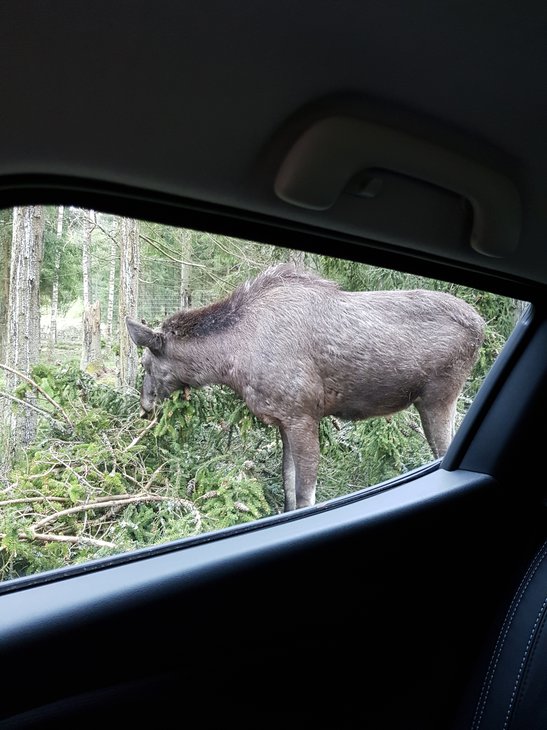
The Swedish woods are full of these things.
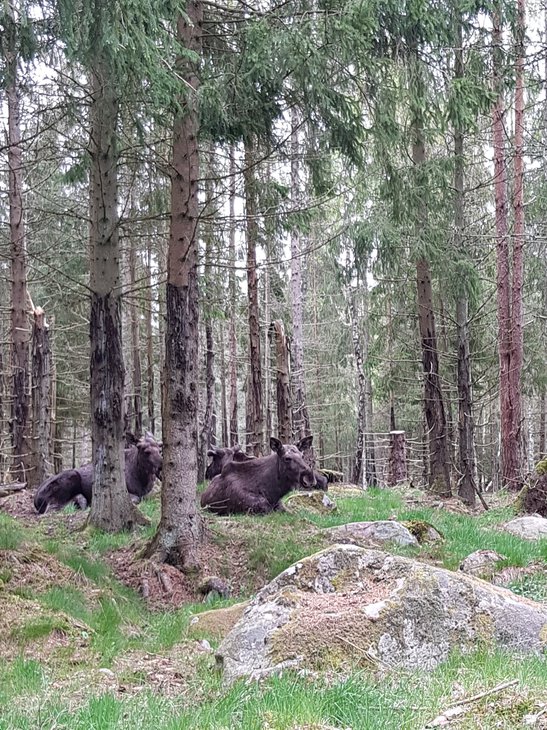
Though, to be fair, this is not unexpected.
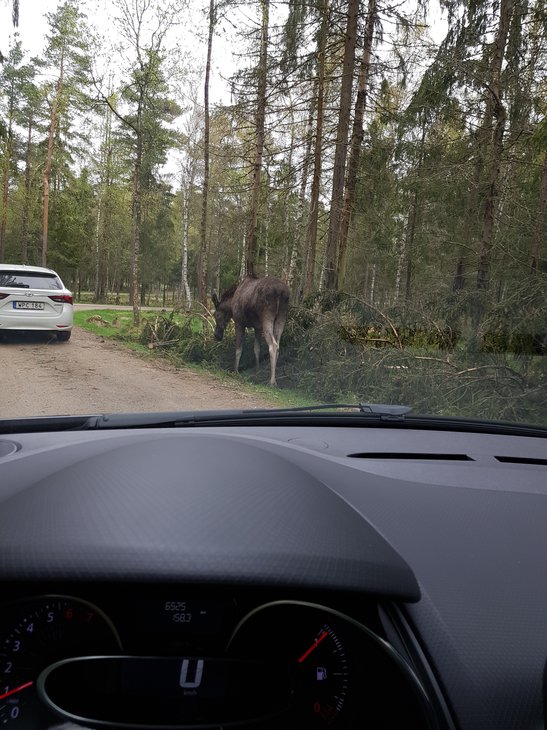
Moose safaris tend to have moose. And bison.
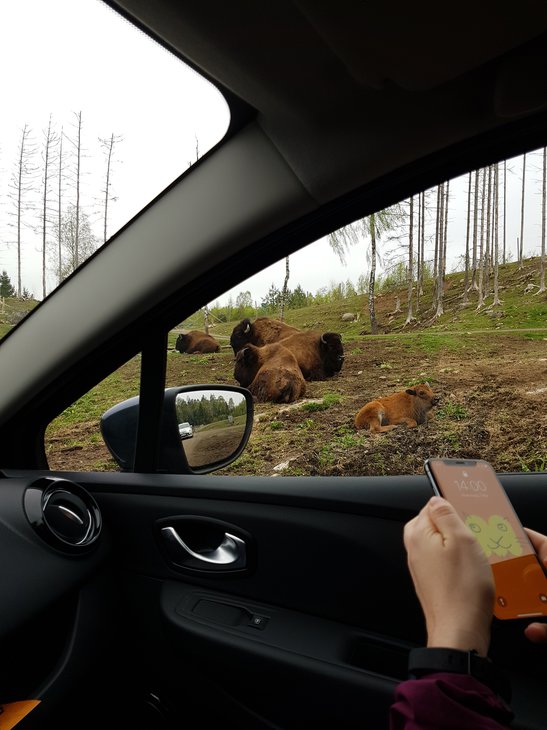
And friendly goats.
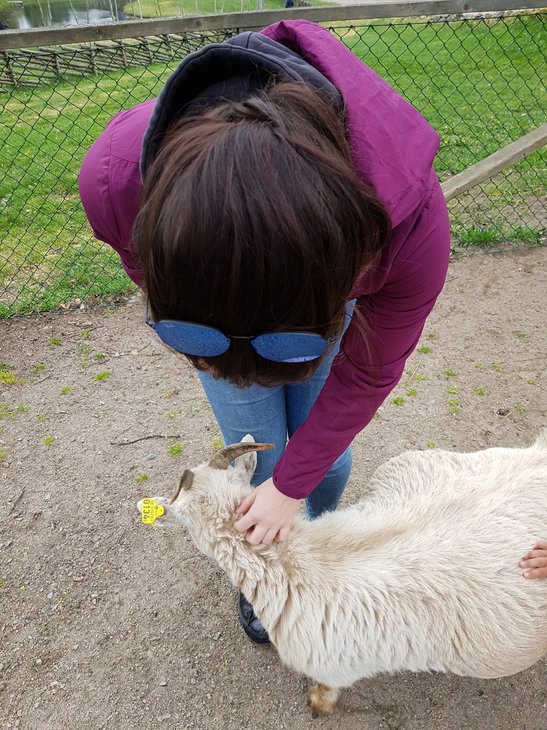
We intend to sleep in the woods, but Sweden is cold, so maybe not.
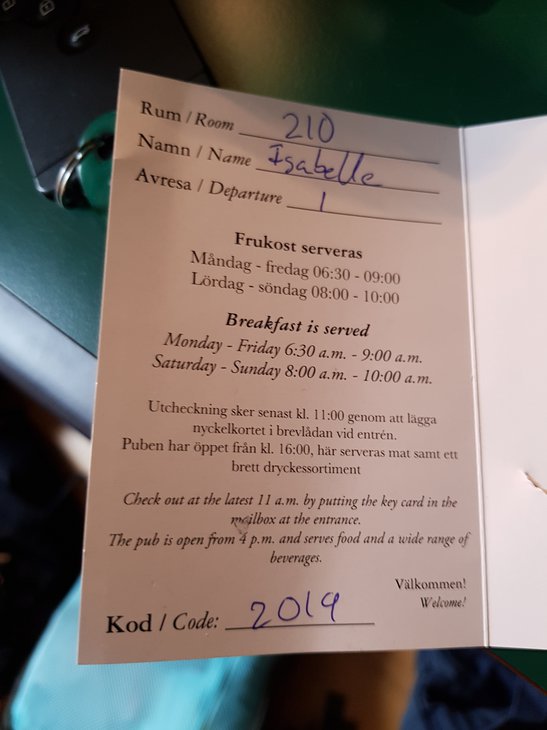
Maybe we will wage war instead.
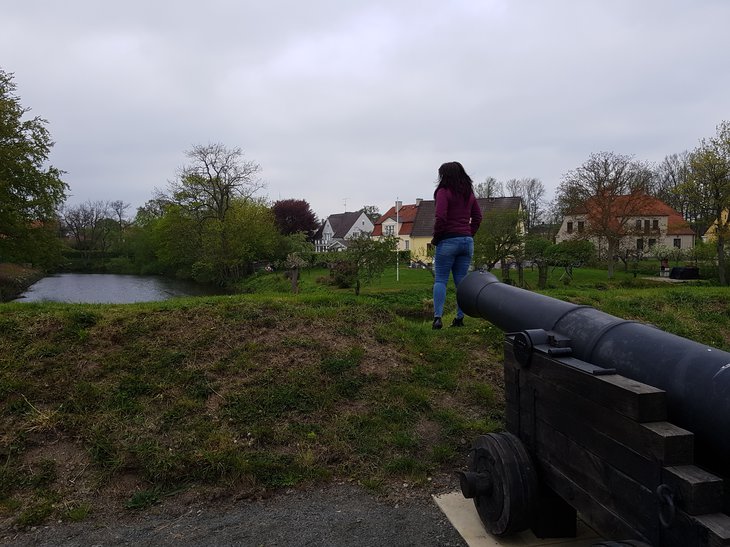
In Kristianstad, East Denmark.
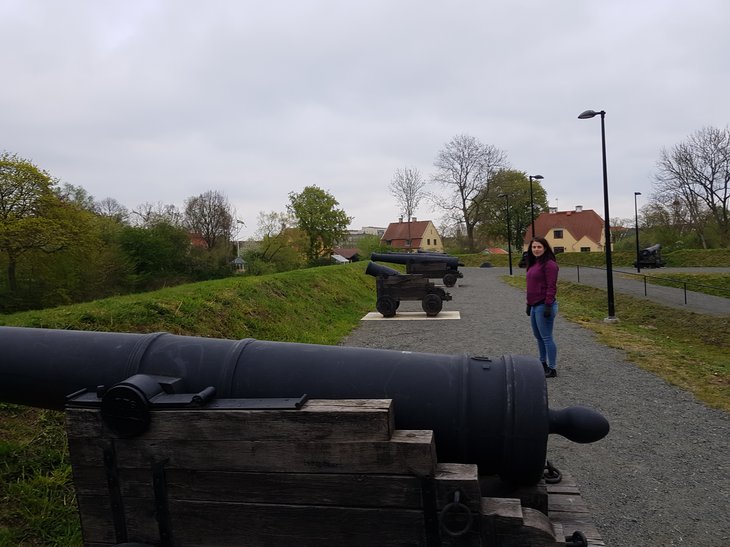
It is from olden days.
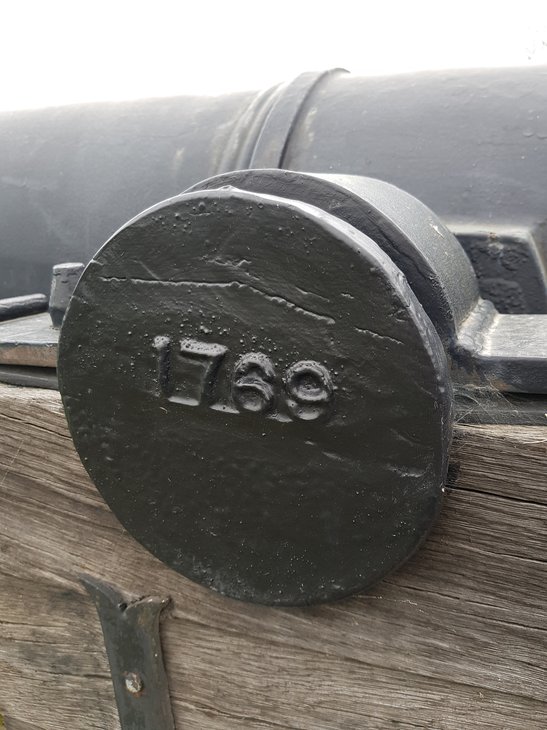
But in modern days, it has swamp lookouts.
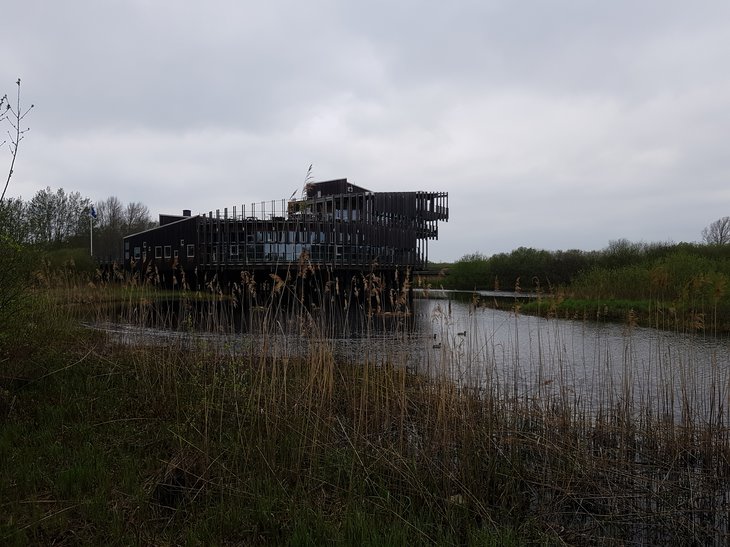
Where you can look out at swamps.
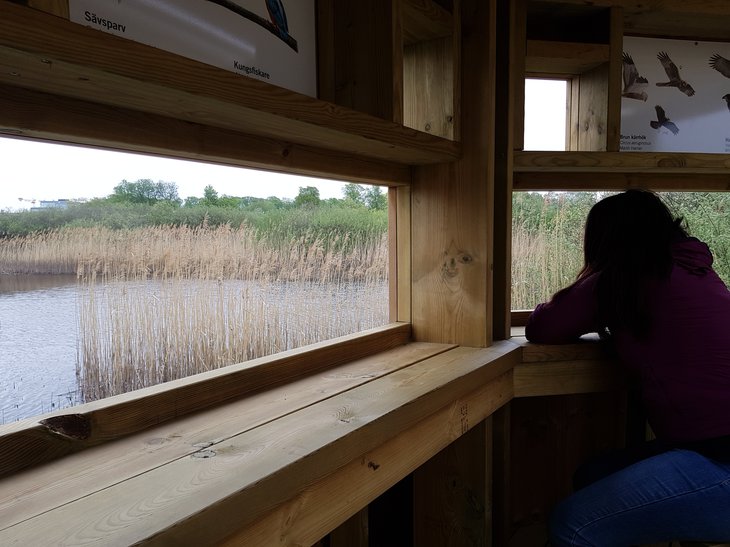
We look out at swamps.
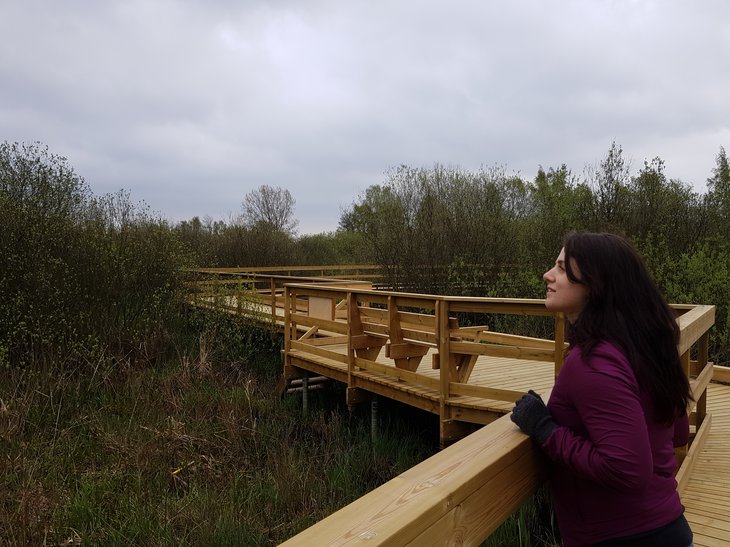
And watch a kite and hawk battle overhead.
Outside of the swamp there are chickens.
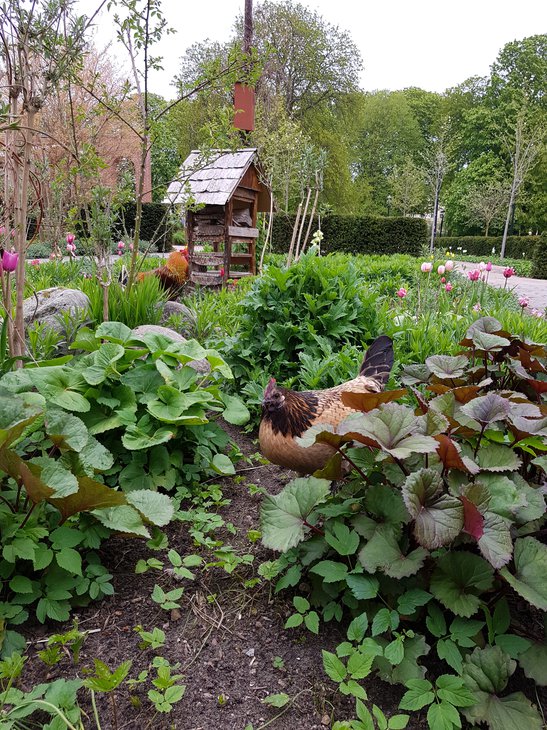
And churches.
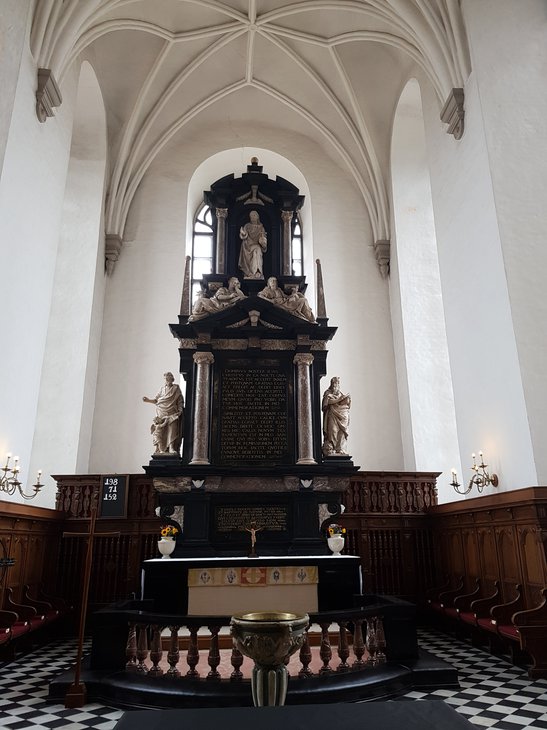
This church teaches about how Santa fed Yoshi.
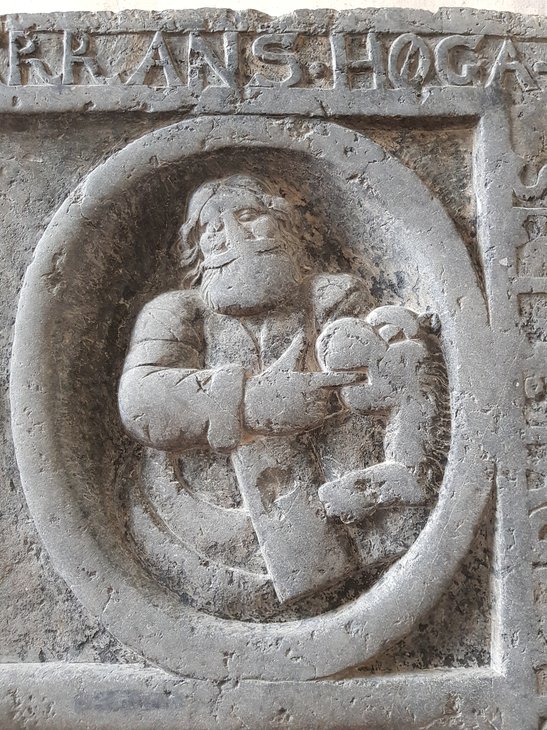
Wild Yoshis last roamed the earth in 1692.
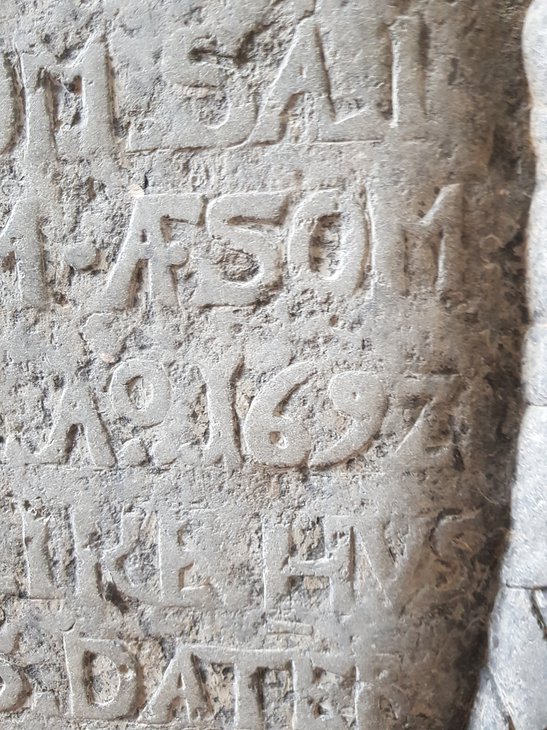
Possibly also when the last organ designers roamed the earth.
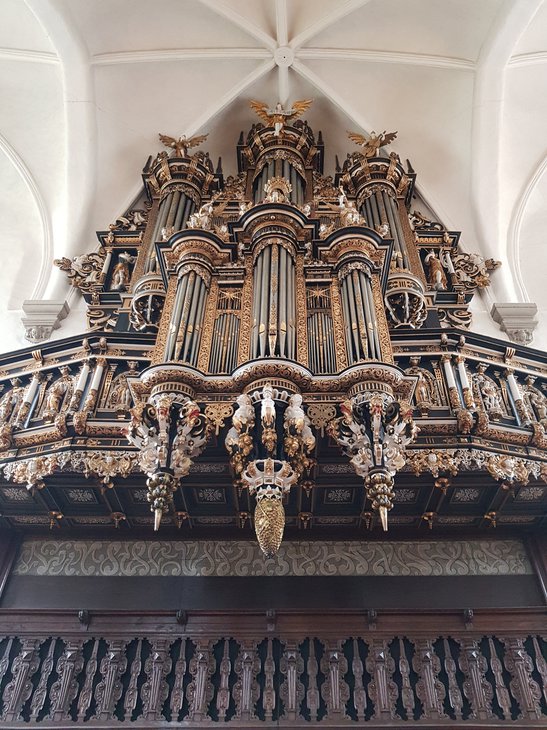
More eastern into Skåne, the wind howls in the trees.
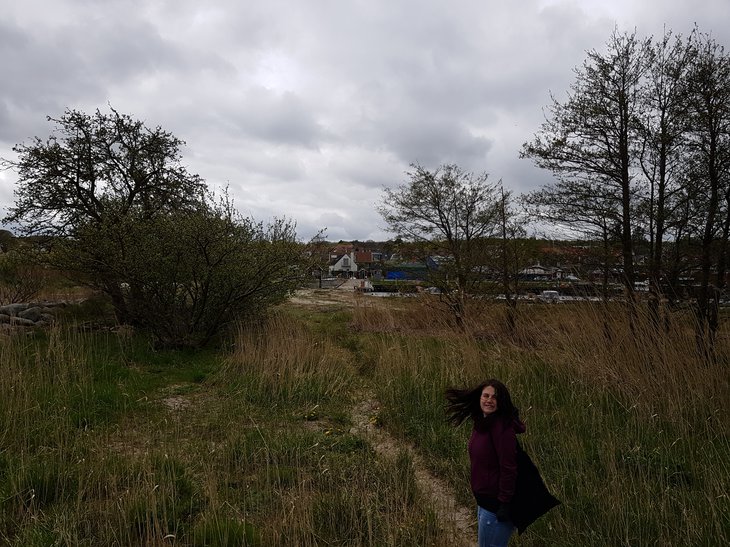
A salty human settlement on the banks of the Baltic Sea.
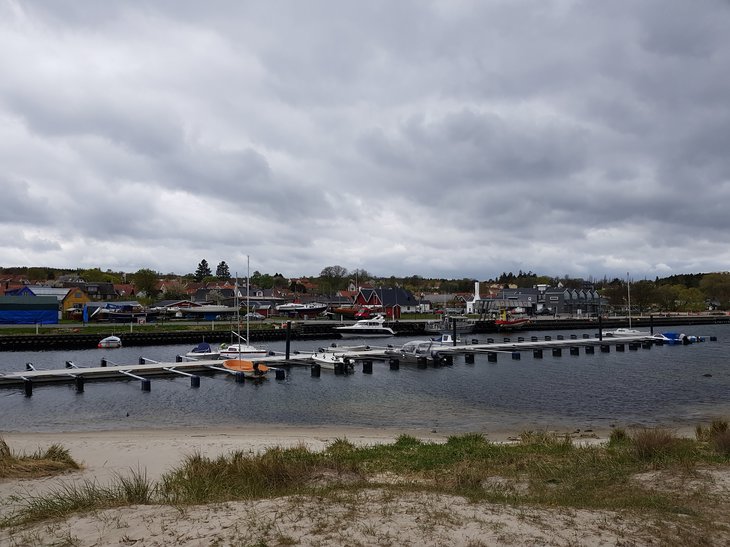
Where mongers smoke fishes at the Kivik Rökeri.
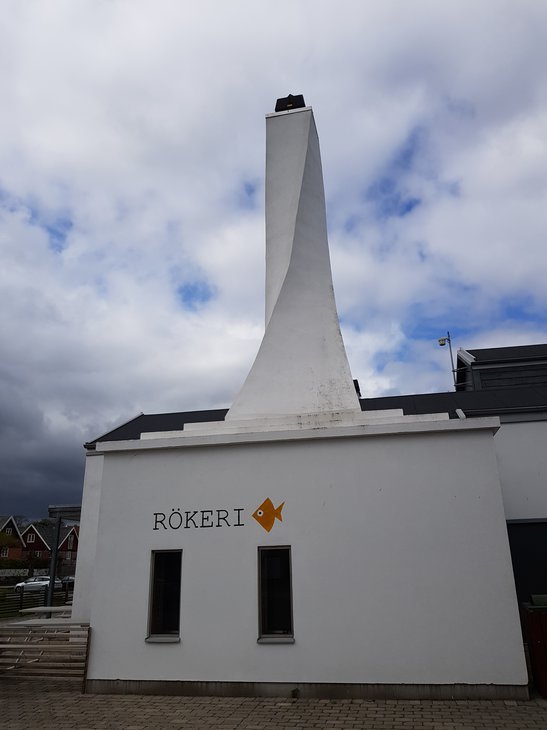
Then it’s southward along the coastline to the next Swedish by.
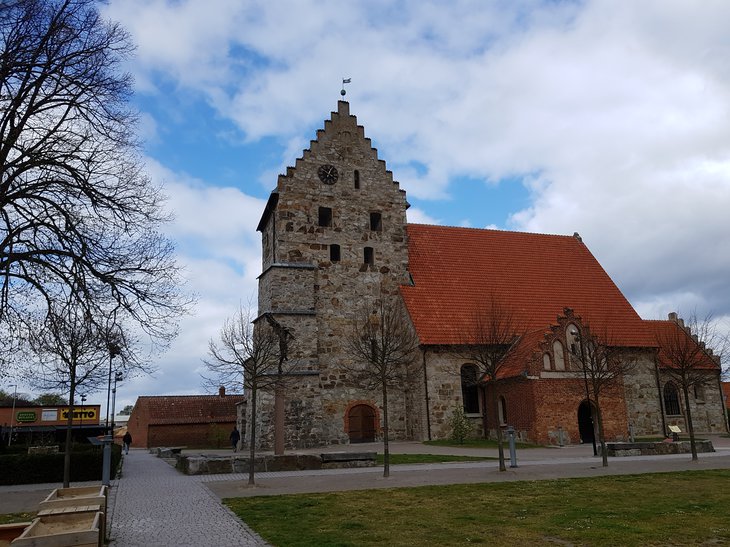
Suspended wooden schooners where sinners atone.
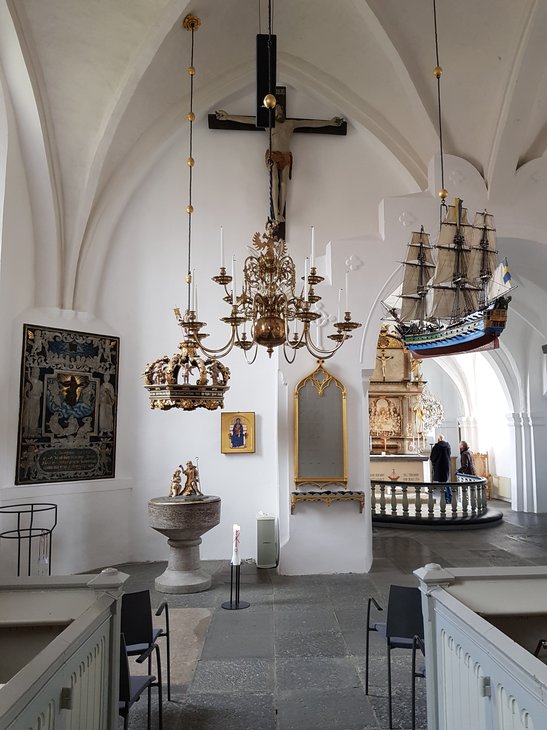
The remnants of the hey-day of Rikstelefon.
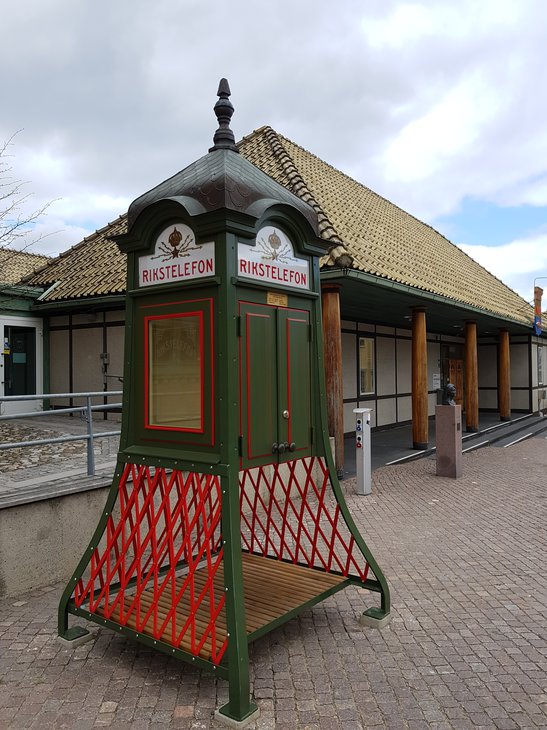
A shiny horseless carriage on tightly cobbled stone.
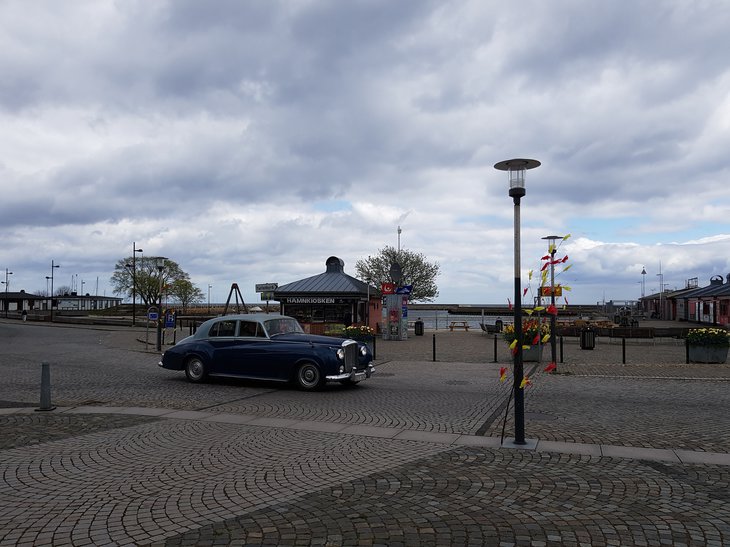
A calm day in Sweden; we’re in Simrishamn alone.
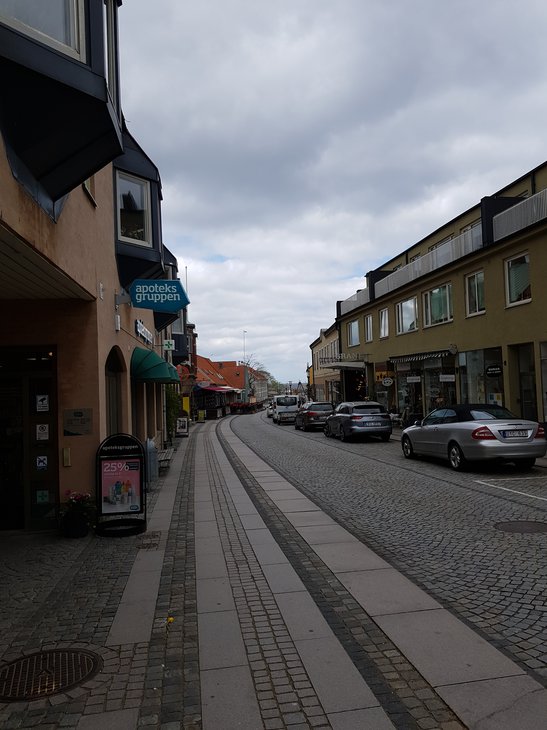
Farther south we come upon a fortress on a gård.
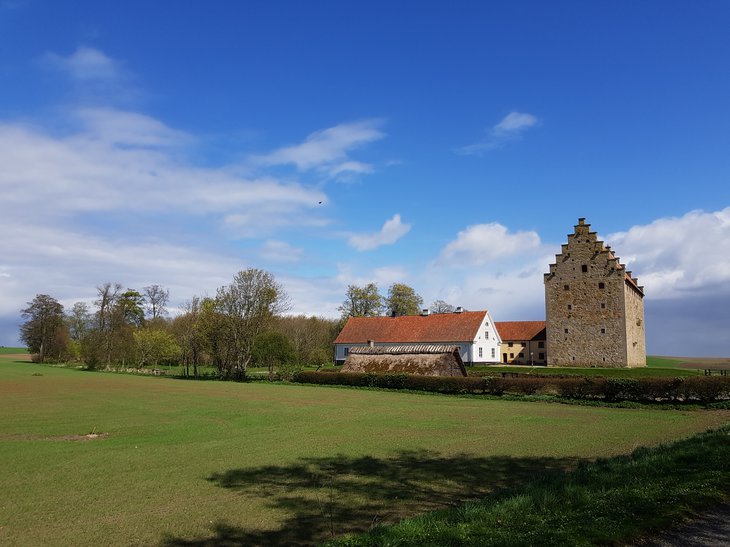
Its ancient moat protection from invading peasant hoardes.
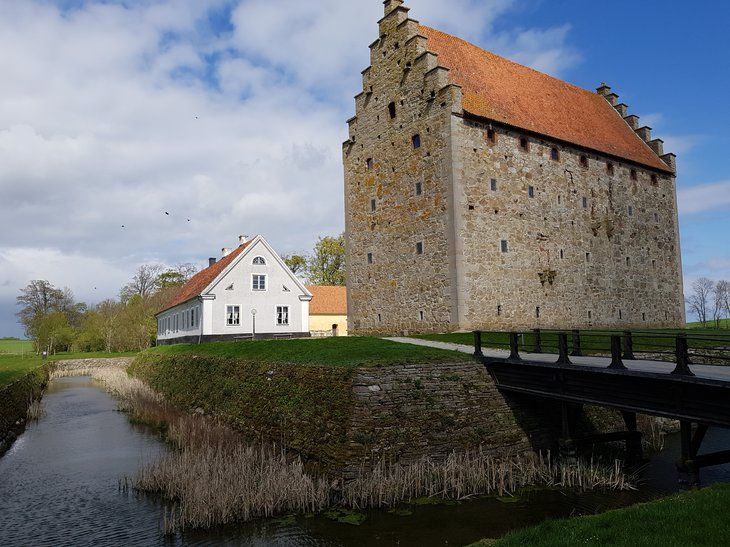
Glimmingehus was built for a pirate who became a Danish lord.
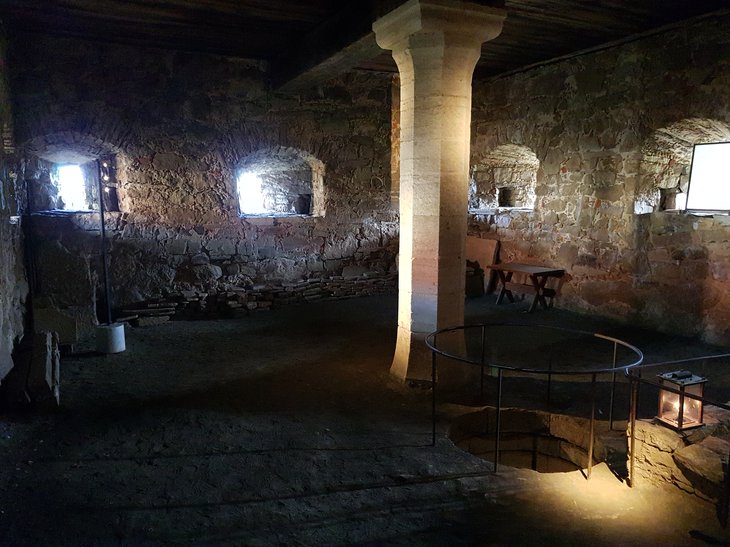
It’s cold and dark and musty, but not completely untoward.
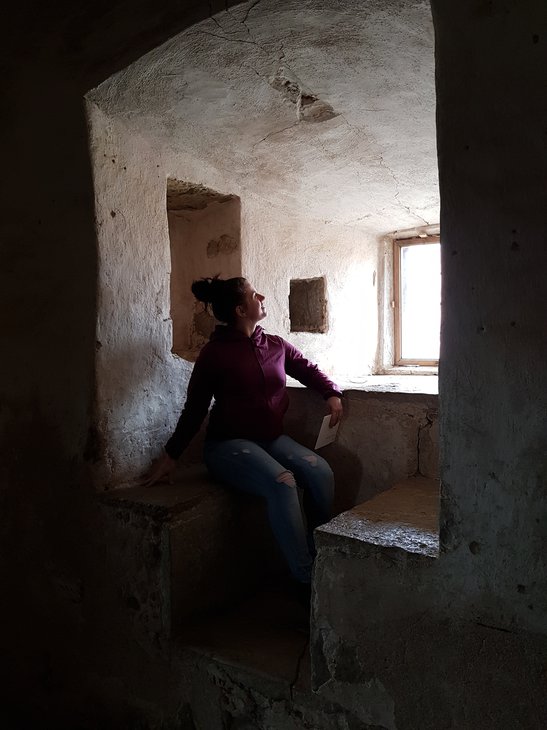
More south along the coastline we find ourselves a bed.
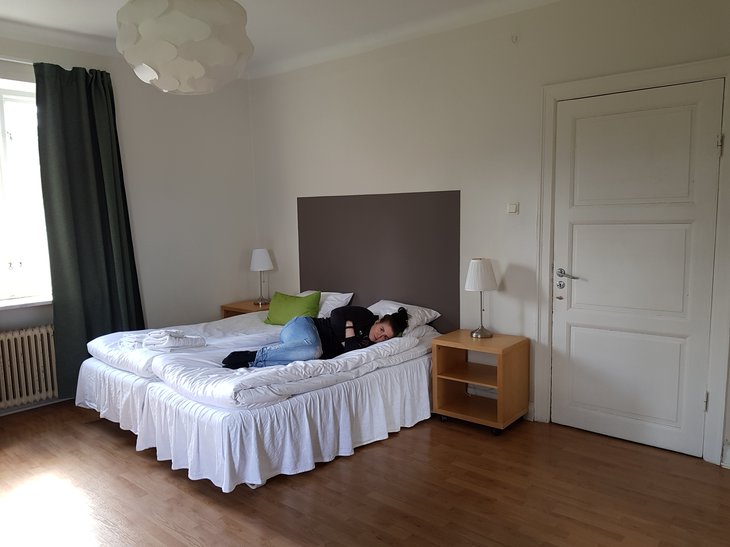
In a small town that is famous for their Danish smørrebrød.
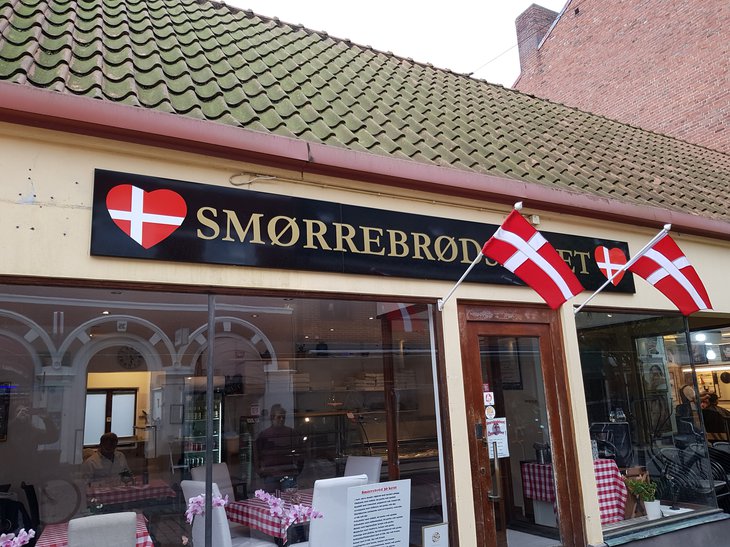
The brewery isn’t open when we’re looking to get fed.
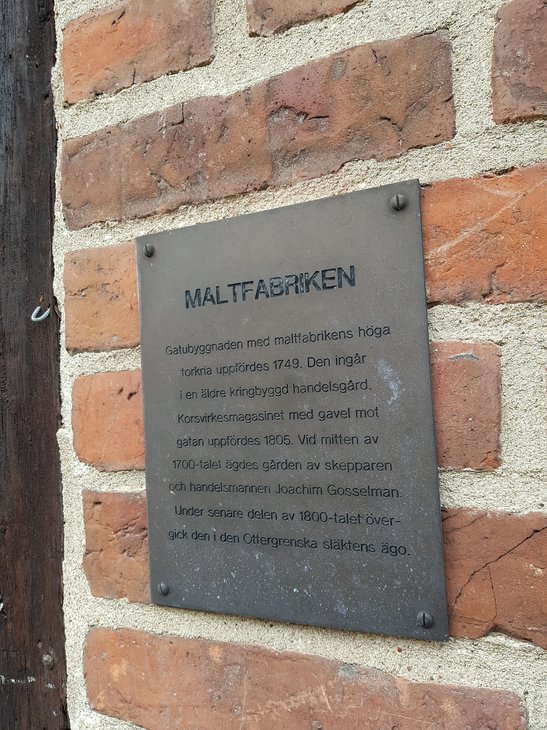
So we head to Ystad harbor for some smoked mussels instead.
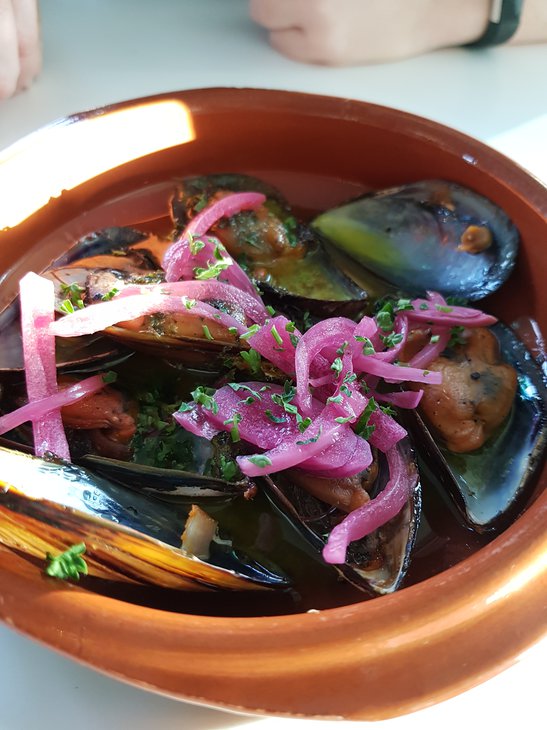
As we leave Ystad we decide to stop writing in rhyme.
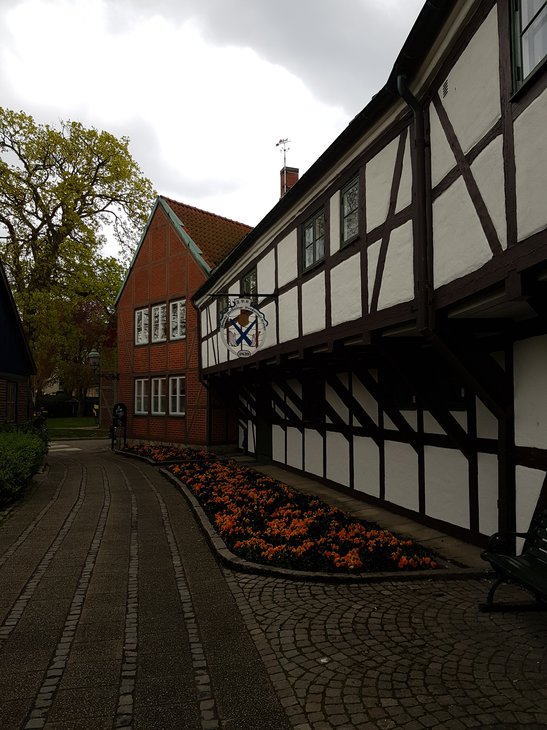
To focus on the road signs and enjoy the sunshine.
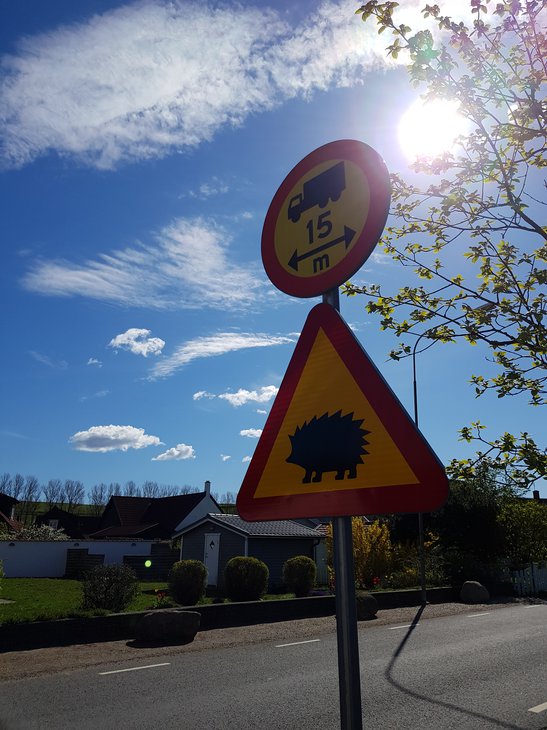
We drive very carefully since hedgehogs don’t deserve to die.
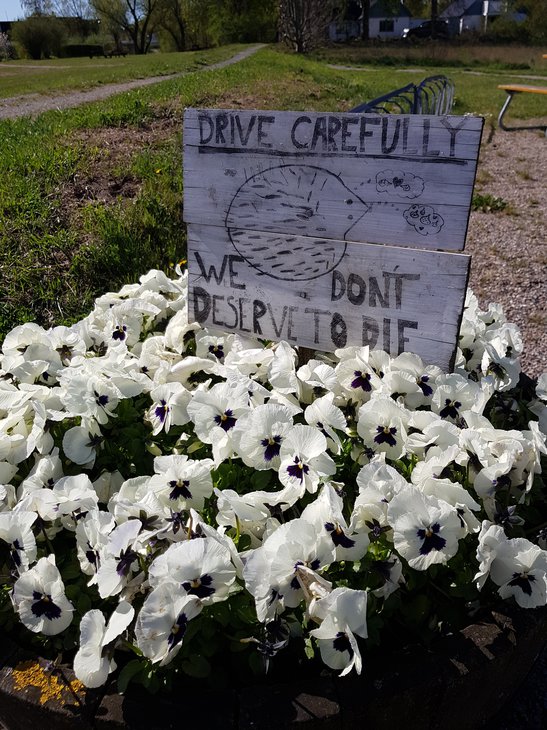
But there are no hogs nor hedges, merely grass and cloudy sky.
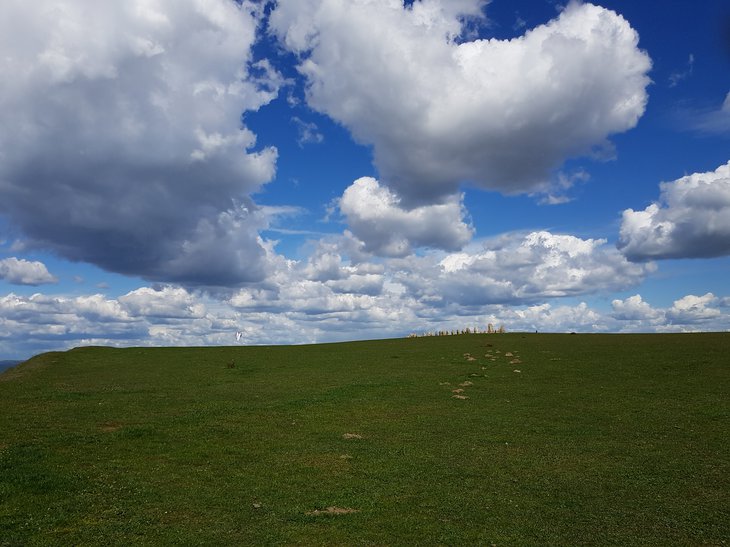
And a pre-viking ship-shaped calendar henge.
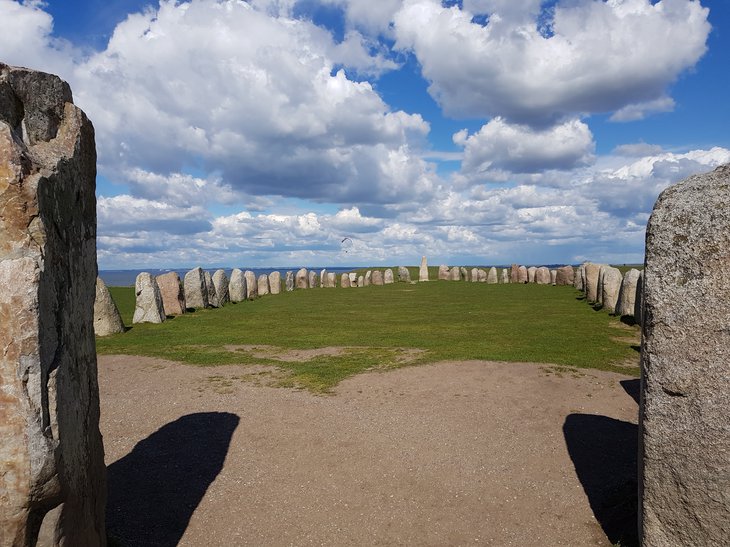
Some guy parachutes over the henge, presumably to determine the date.
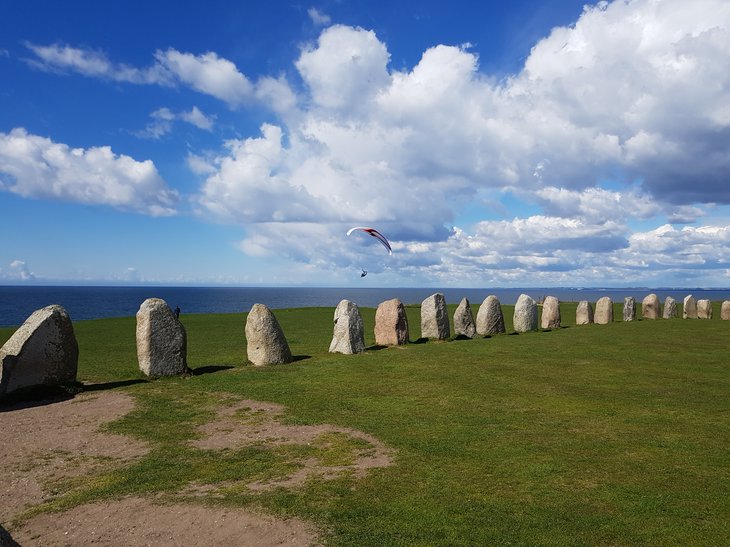
Isabelle determines the date with her iPhone.
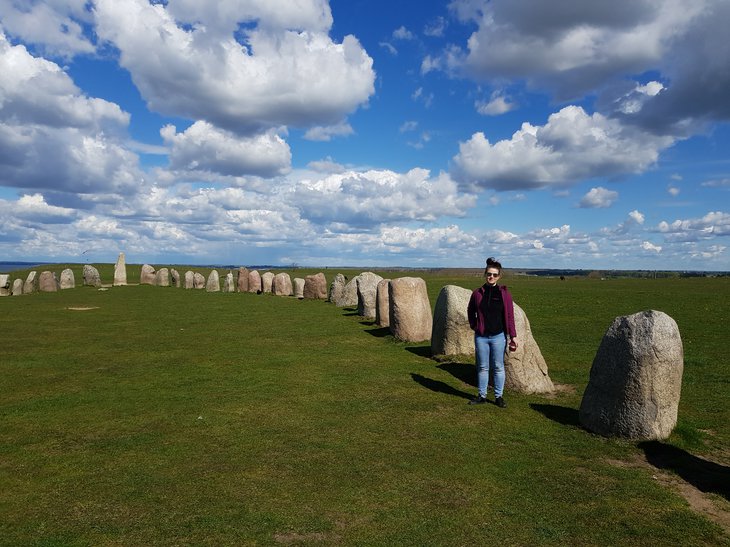
We wiggle our fingers in wifi to explode the toilet.
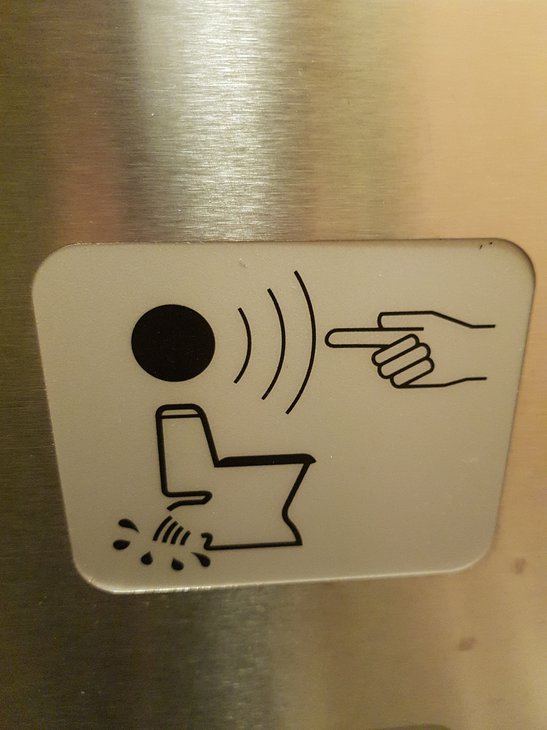
And then visit this point.
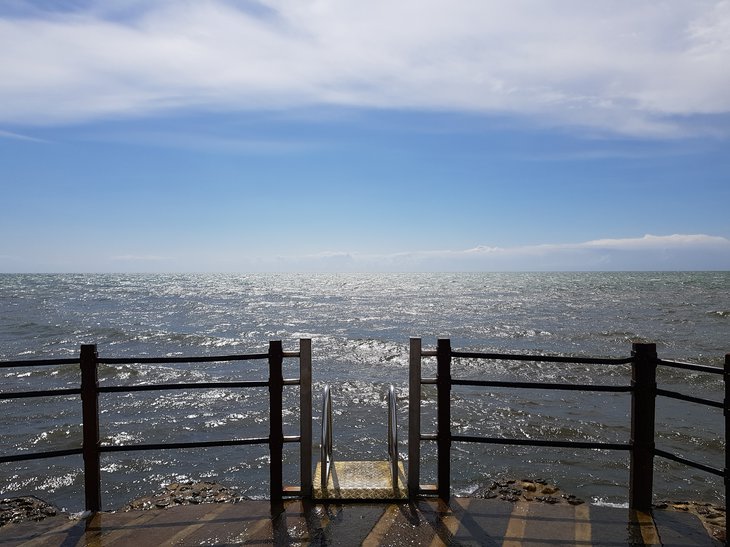
Which is the southernmost point in Sweden.
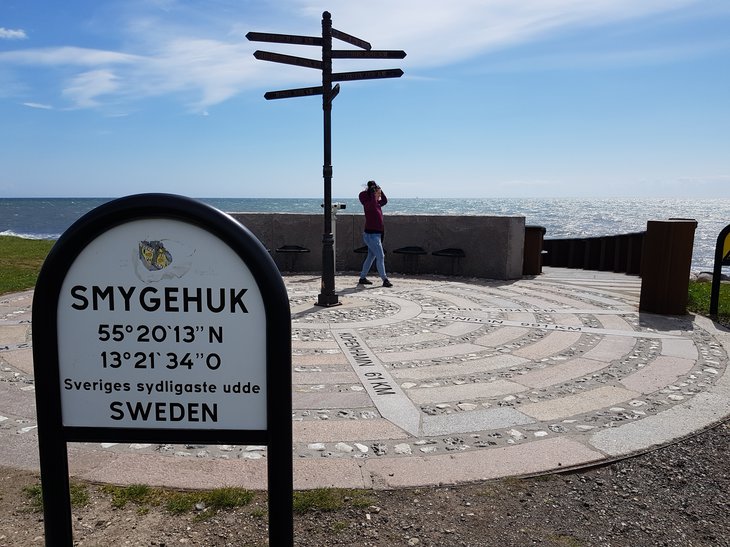
Where we have a plate of the southernmost smoked fish in Sweden.
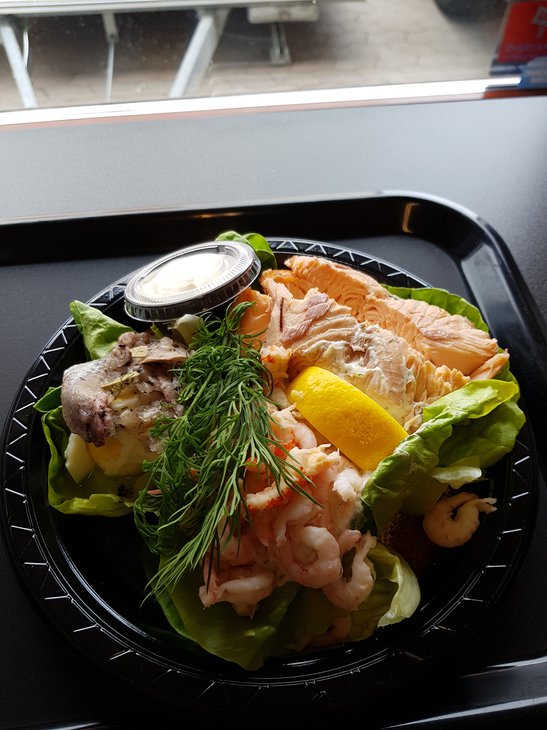
And drool over the southernmost smoked baltic eel in Sweden.
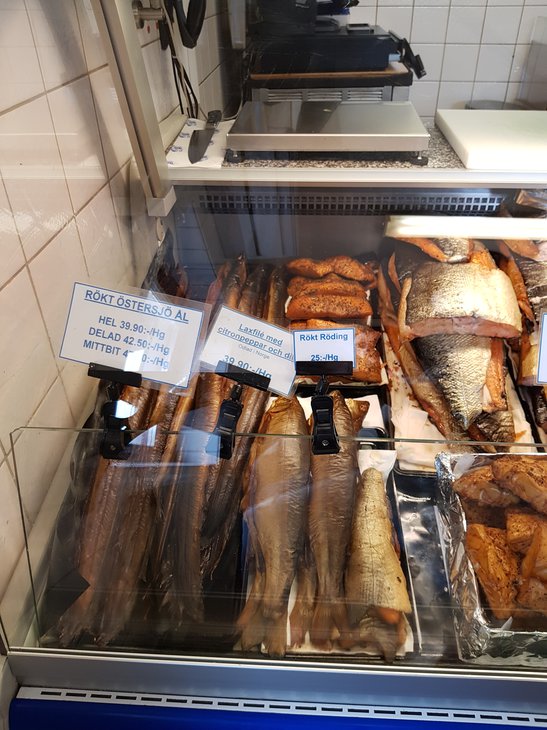
And then drive north, as that is the only way to drive.
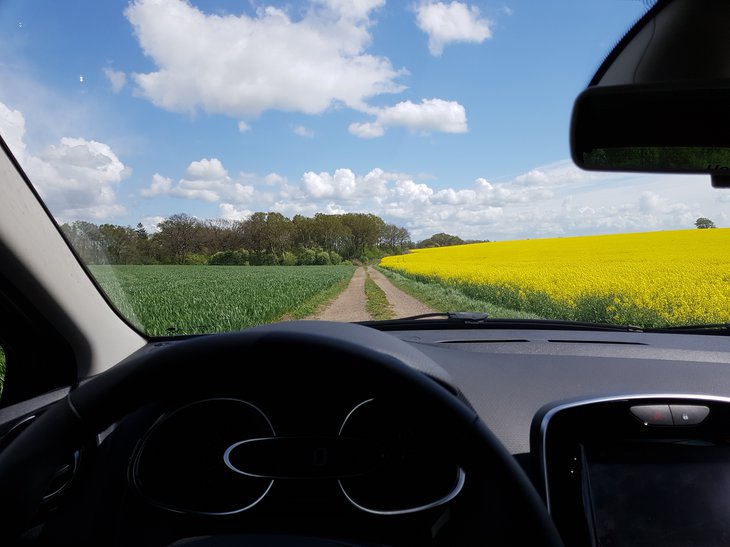
Rapeseed, otherwise known as canola.
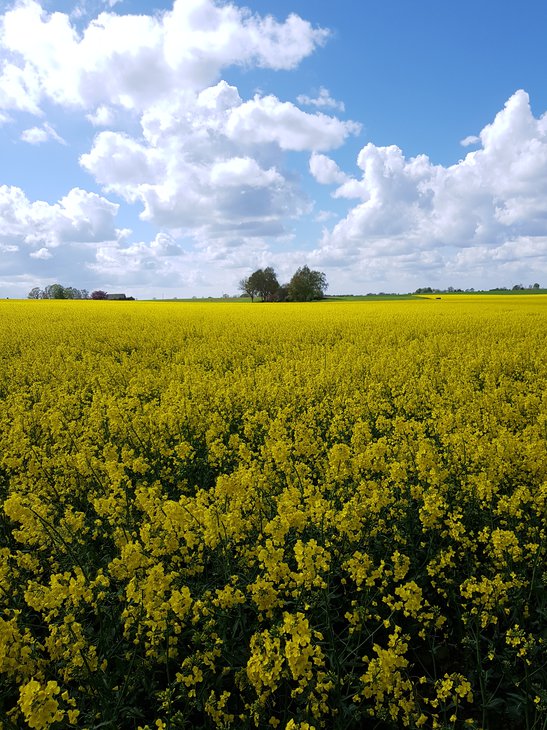
Beneath the seed: grooved stones.
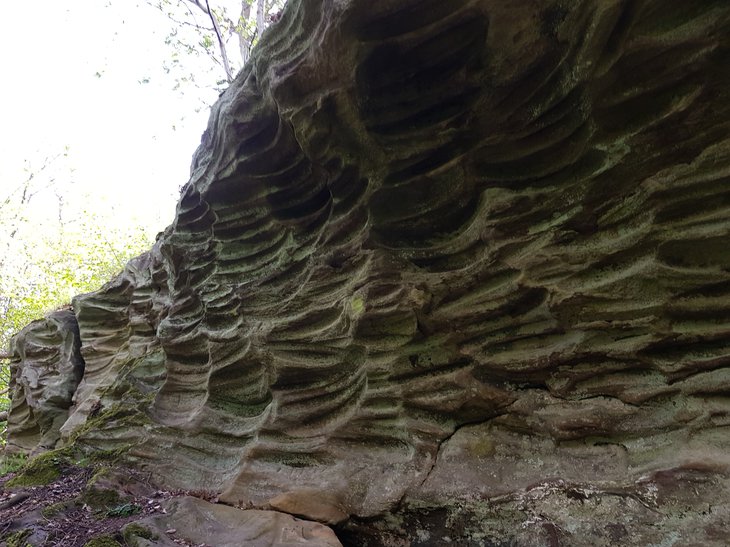
Nobody knows who grooved the stones, nor why.
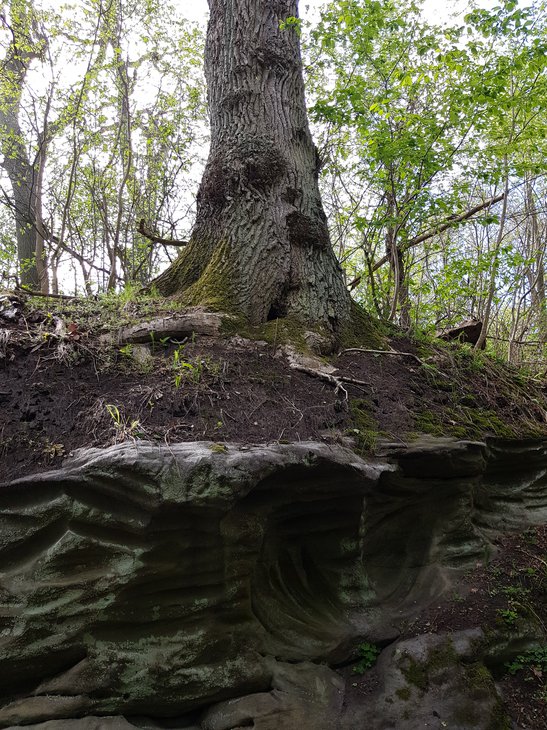
But they estimate they were grooved around 3000 BC.
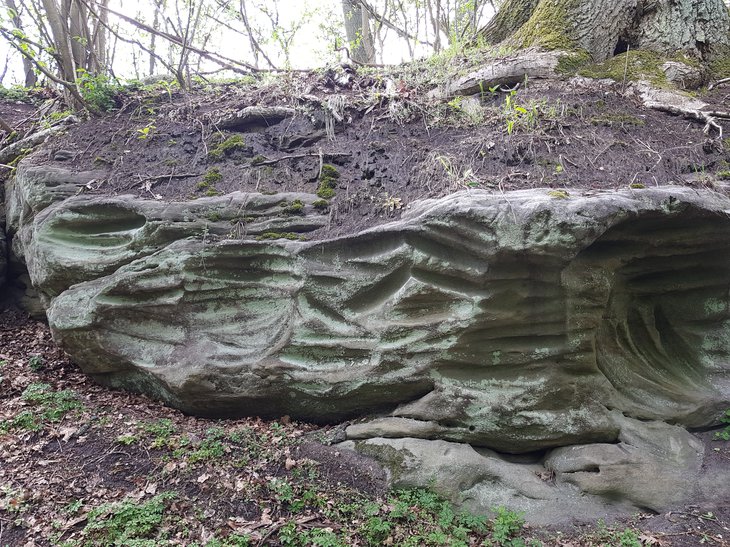
Groovy.
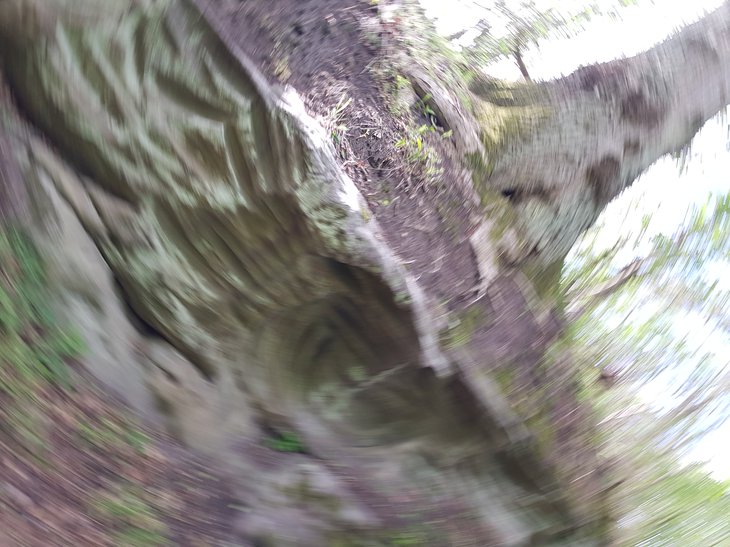
Vineyards are groovy, too. We check into one.
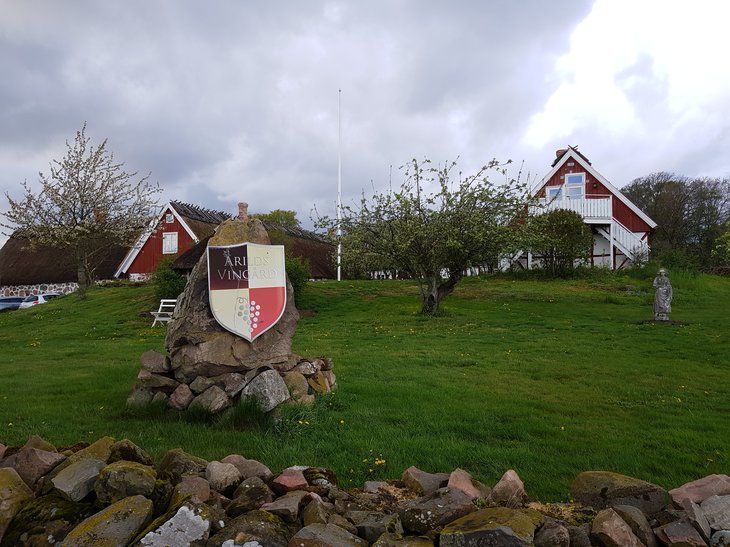
It hails. Or graupels, to be perfectly accurate.
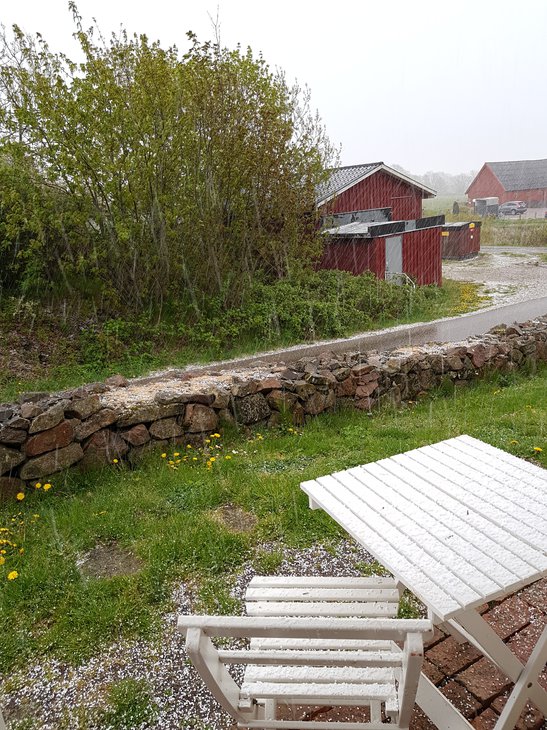
When that’s clear, we wander to an old church.
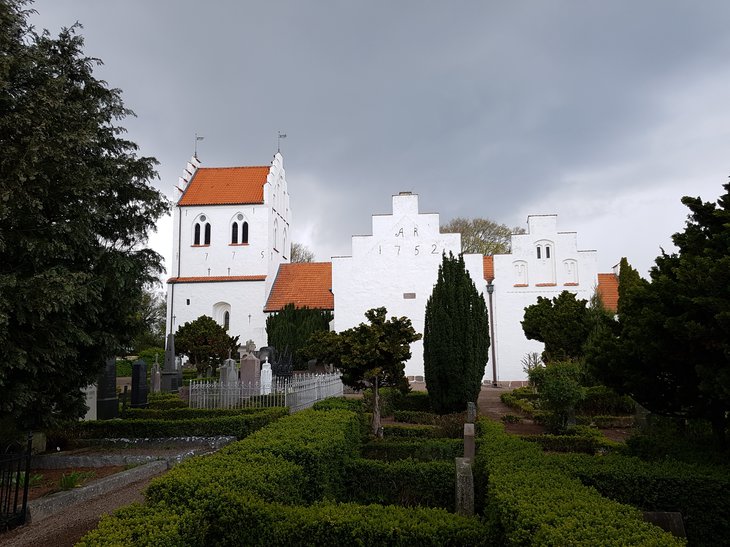
We consider mortality. We consider eXistenZ.
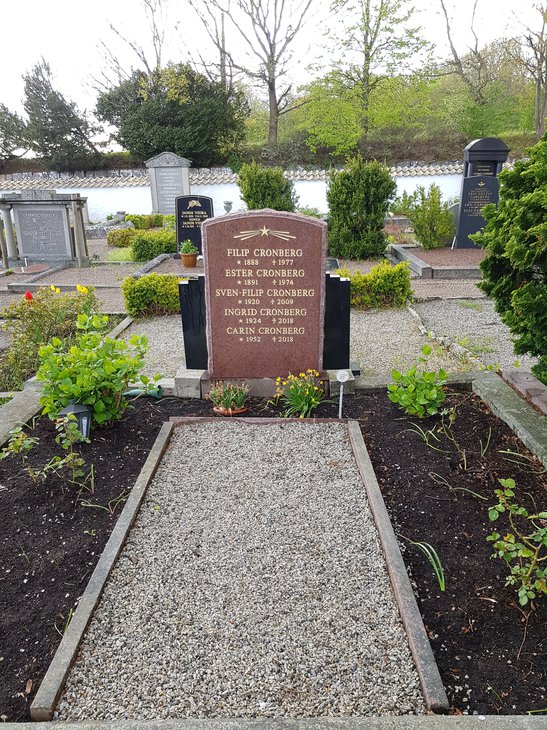
It hails. Or graupels, to be perfectly accurate.
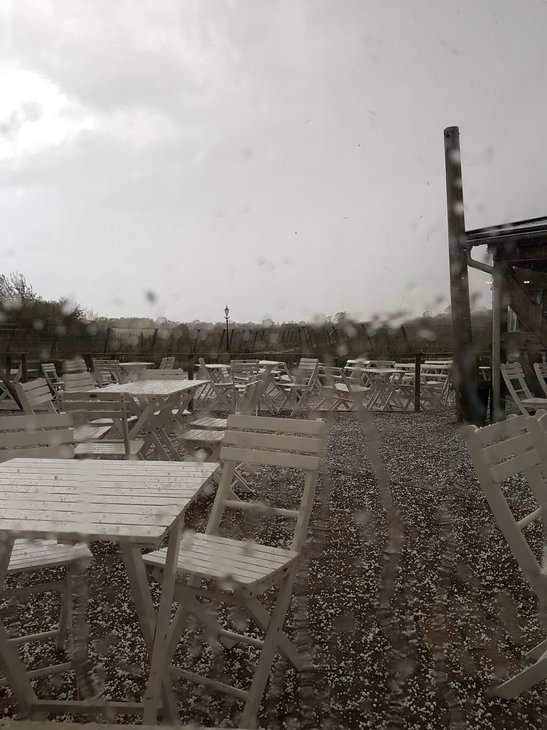
There’s a roof-dog.
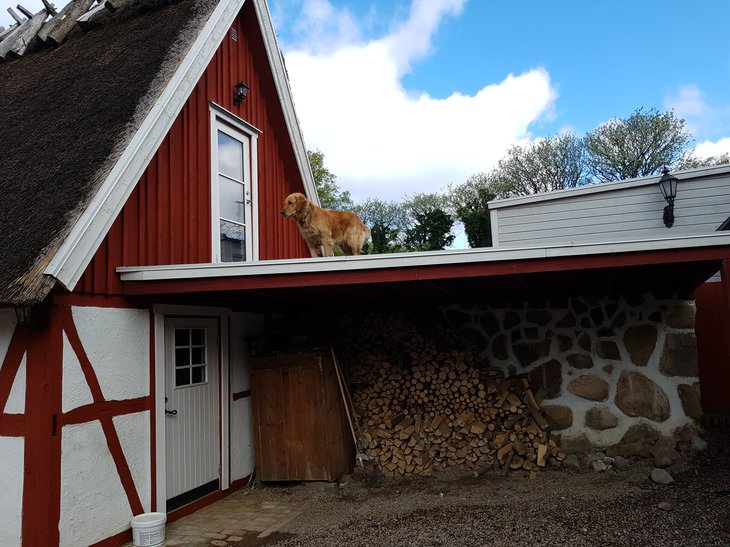
We are warned not to bother the Peregrine falcons.
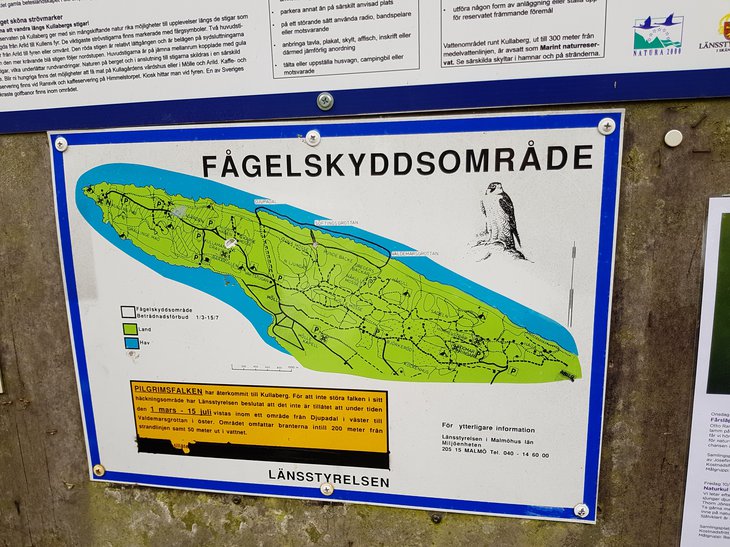
But we are just here for a stroll, not bird harassment.
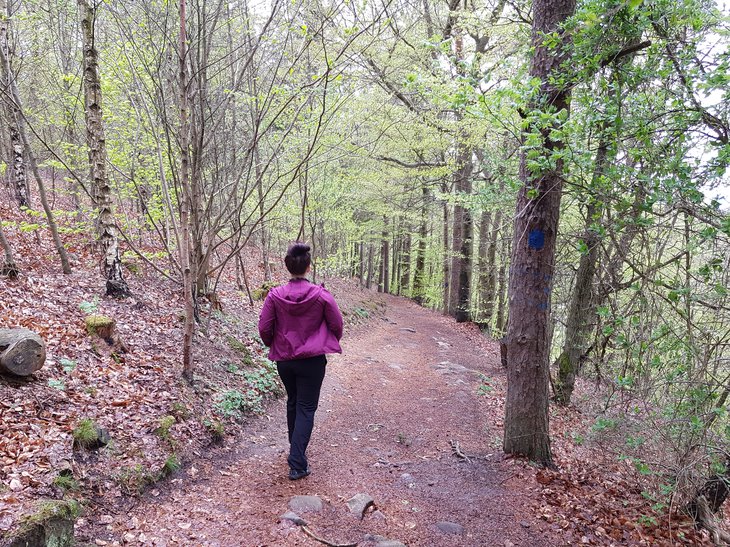
But not any old stroll.
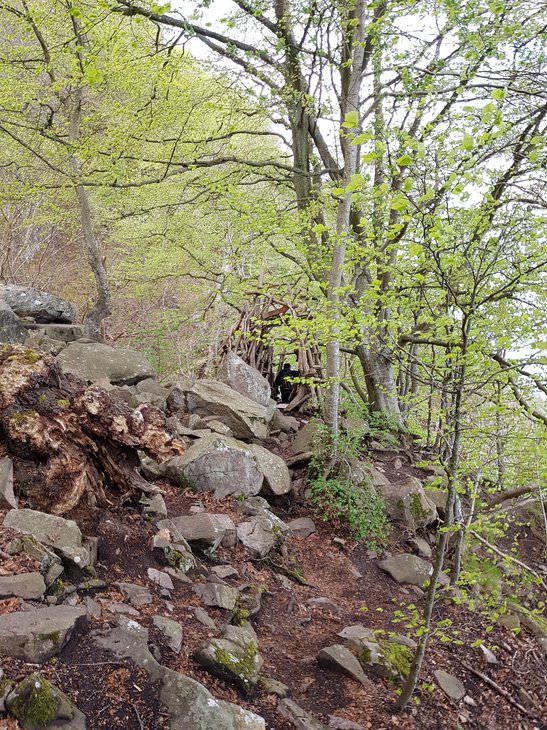
A stroll through the gate.
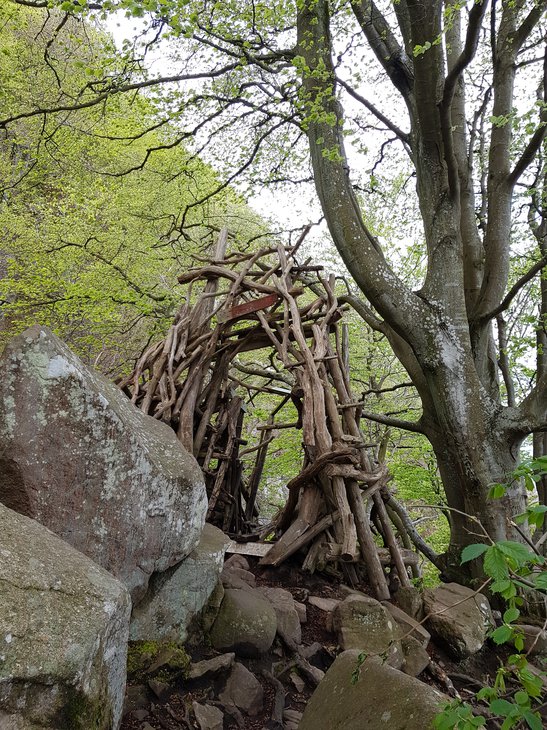
A stroll into the driftwood temple of Nimis.
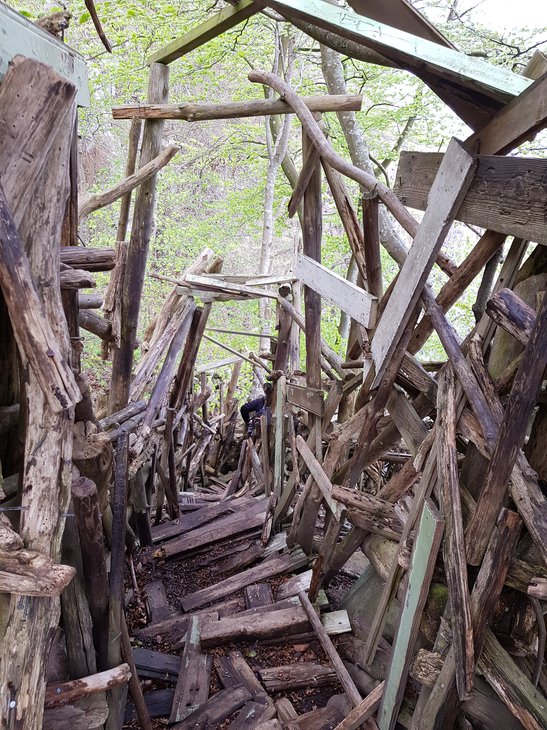
This is the disputed independent micronation of Ladonia!
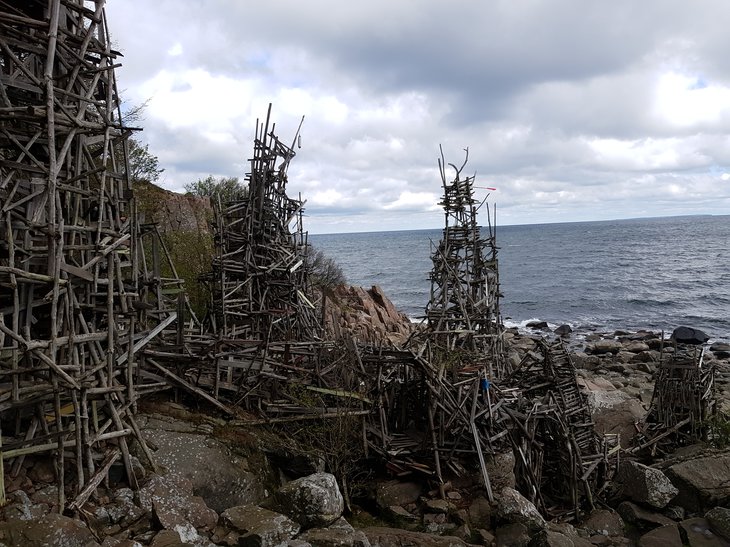
And we are its esteemed guests.
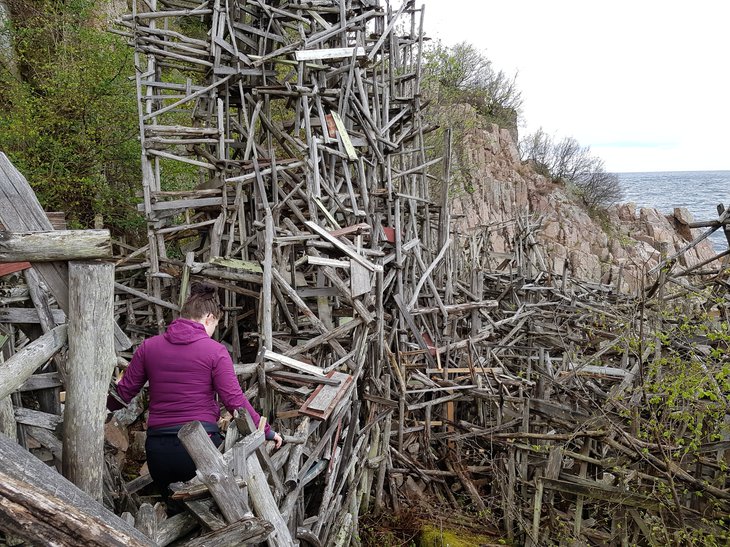
Isabelle leads the way into the inner sanctum.
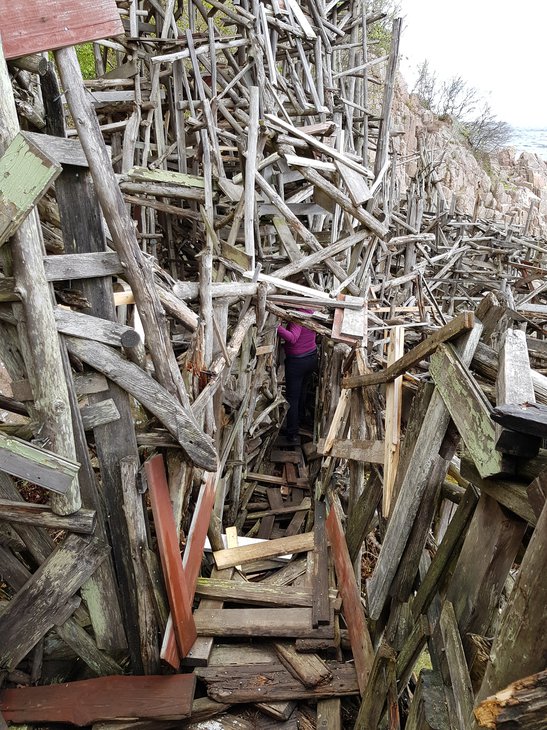
In the heart of 75 tonnes of driftwood.
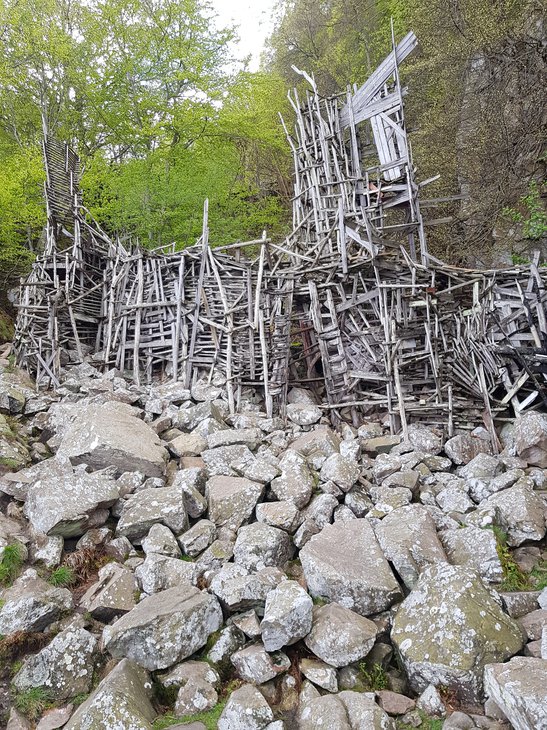
It is haphazard, but remarkably sturdy.
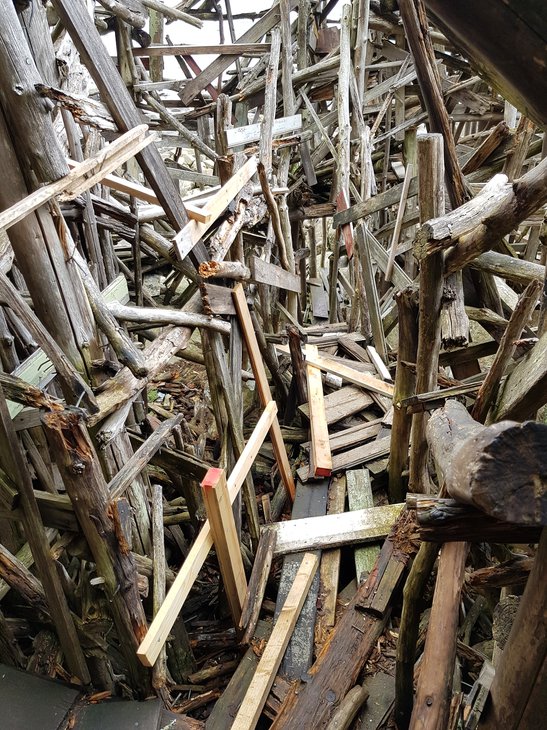
Beyond it lies its smaller stone brethren.
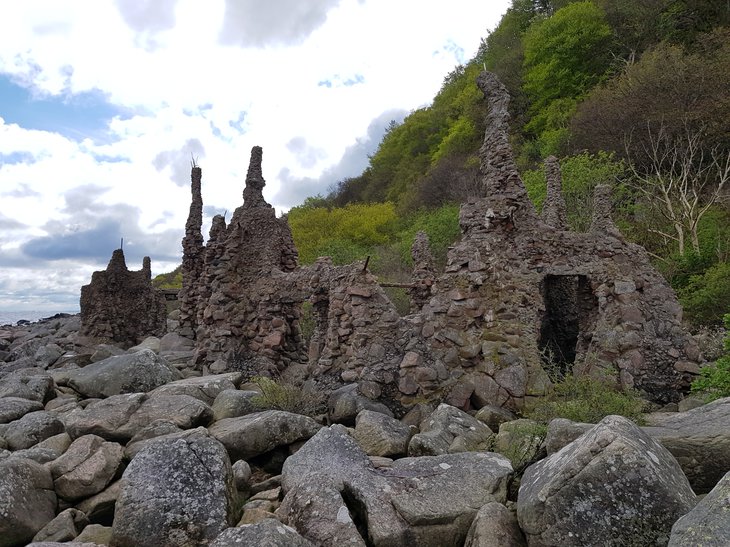
A Peregrin falcon fights overhead, and we do not bother it.
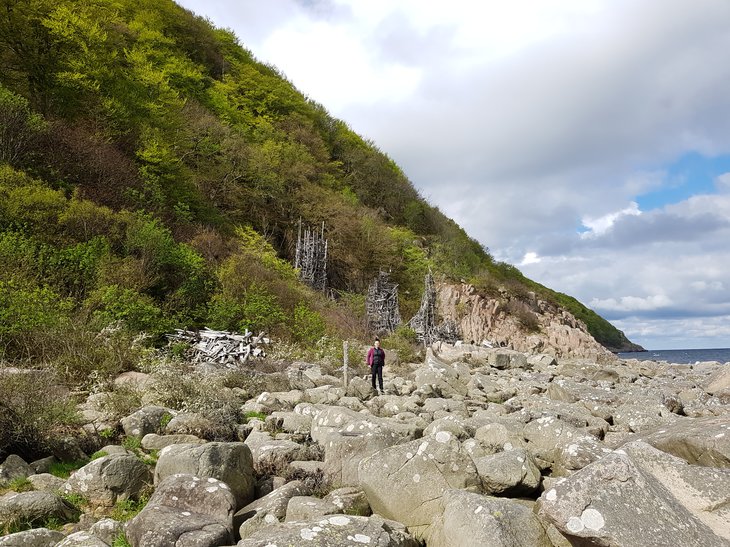
But we do have to leave Nimis and Ladonia.
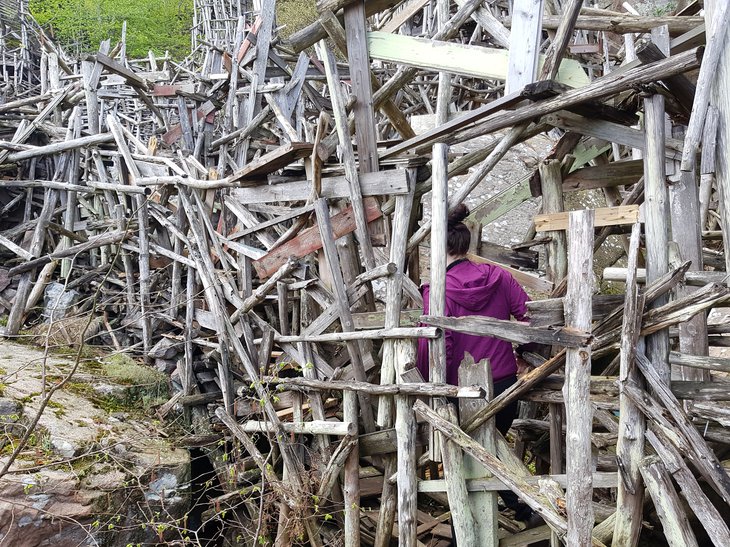
And teleport 300km inland.
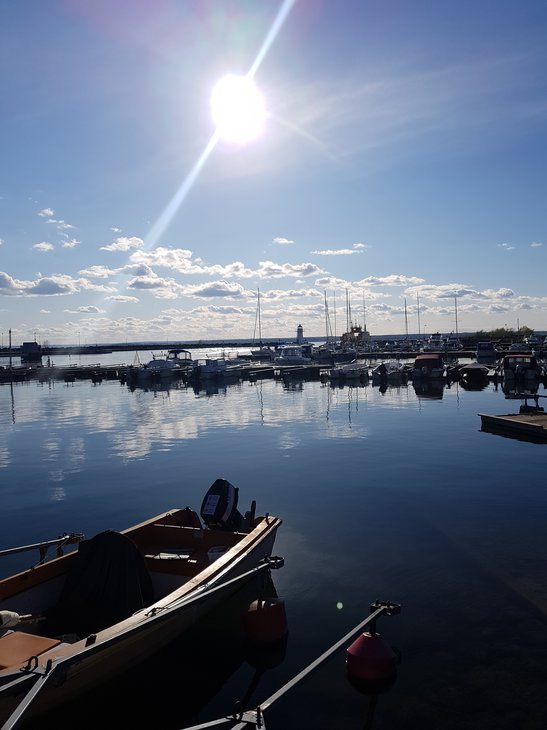
To a sleepy town on the second largest Swedish lake.
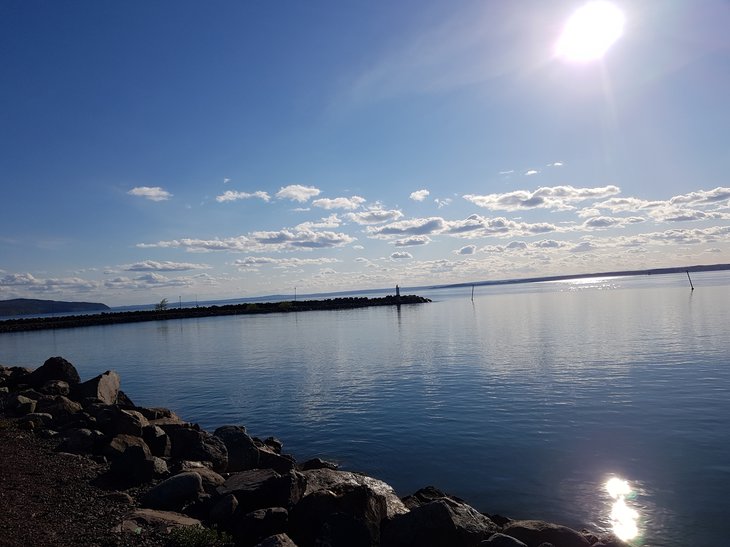
Where we eat smoked shrimp and non-alcoholic milk stout.
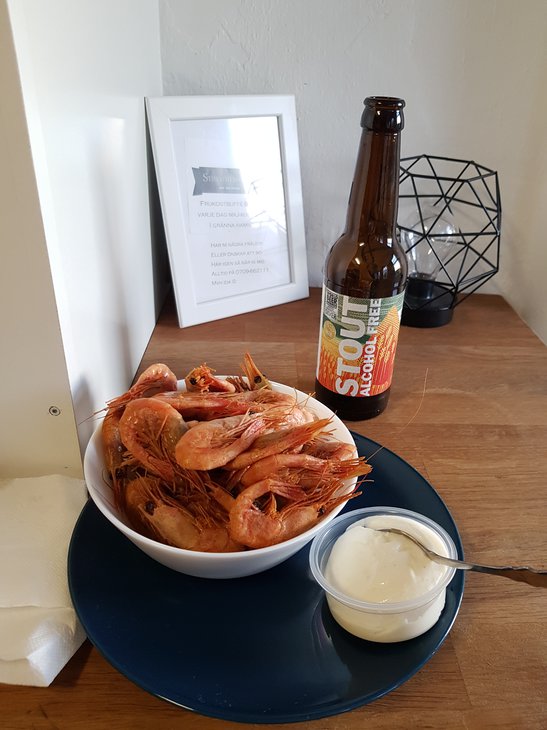
It’s Gränna, the polkagris town, where polkagris are made.
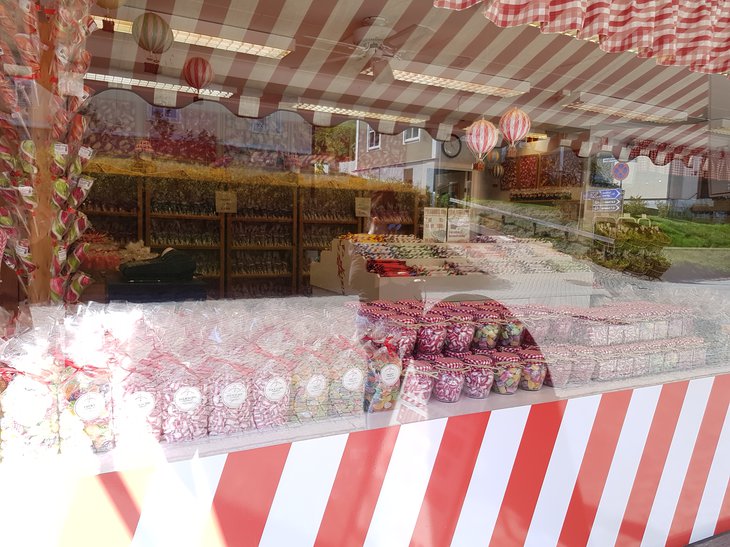
Polkagris are candy canes.
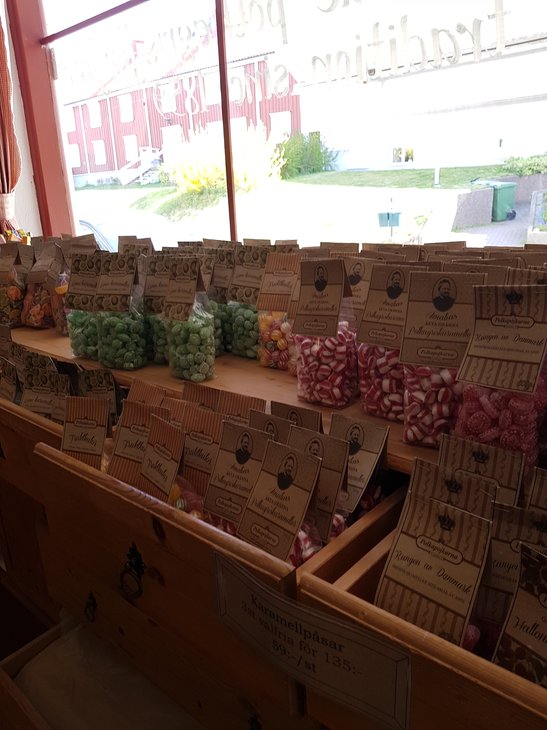
And this town makes them.
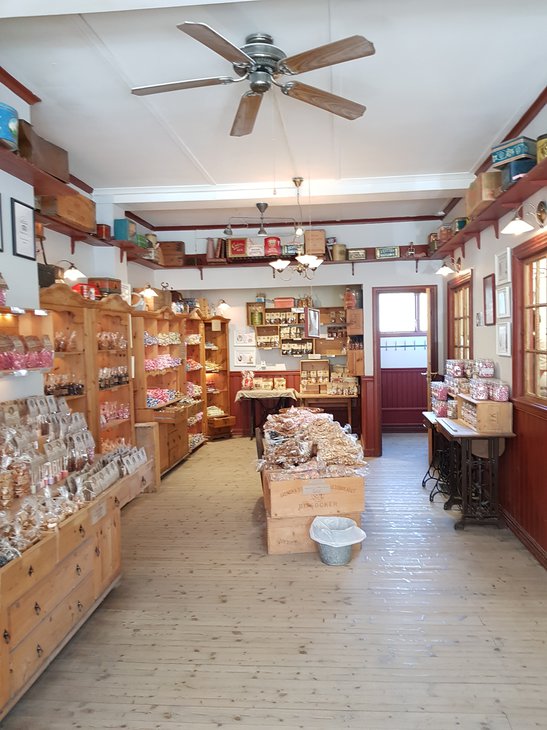
And talk about them.
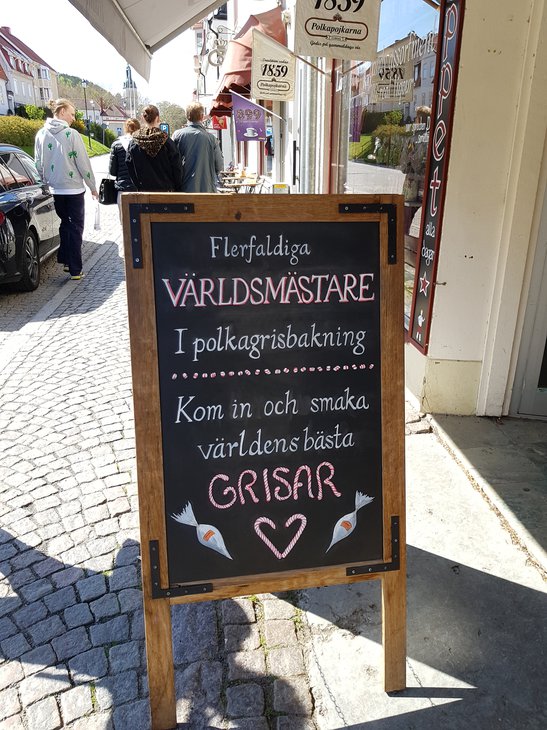
And shows them off.
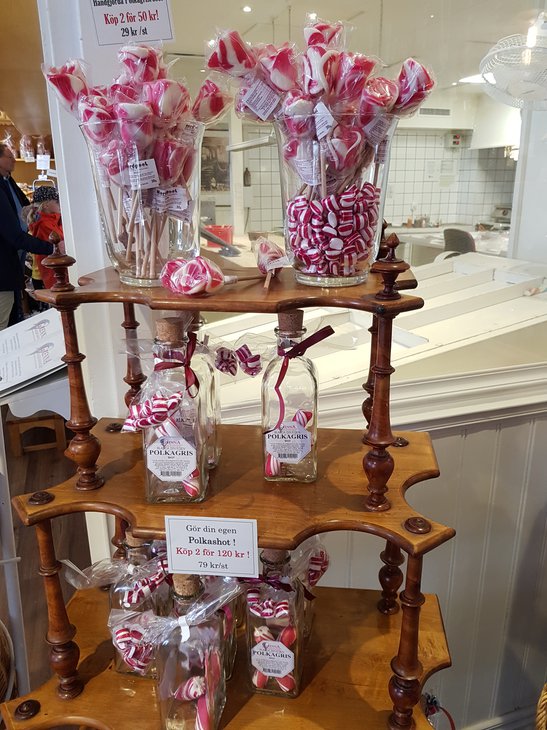
And sells them.
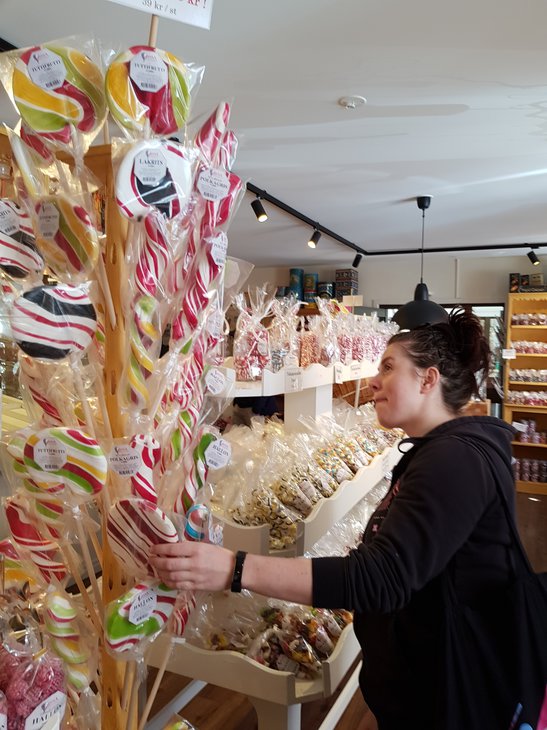
The Swedish Beard Association met in these ruins.
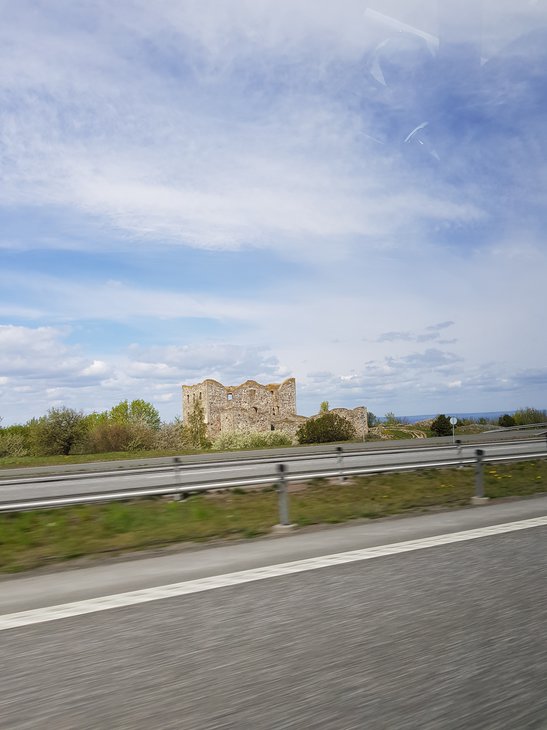
The police were called, because the neighbors thought they were ISIS.
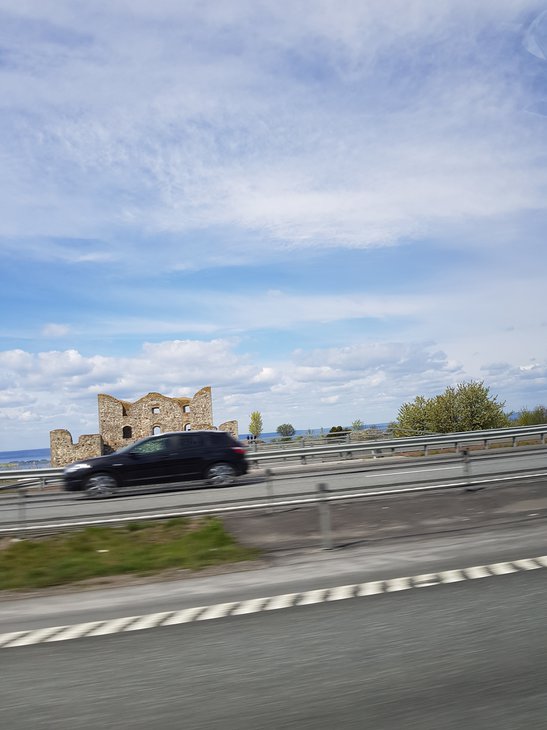
That’s what the south is like.